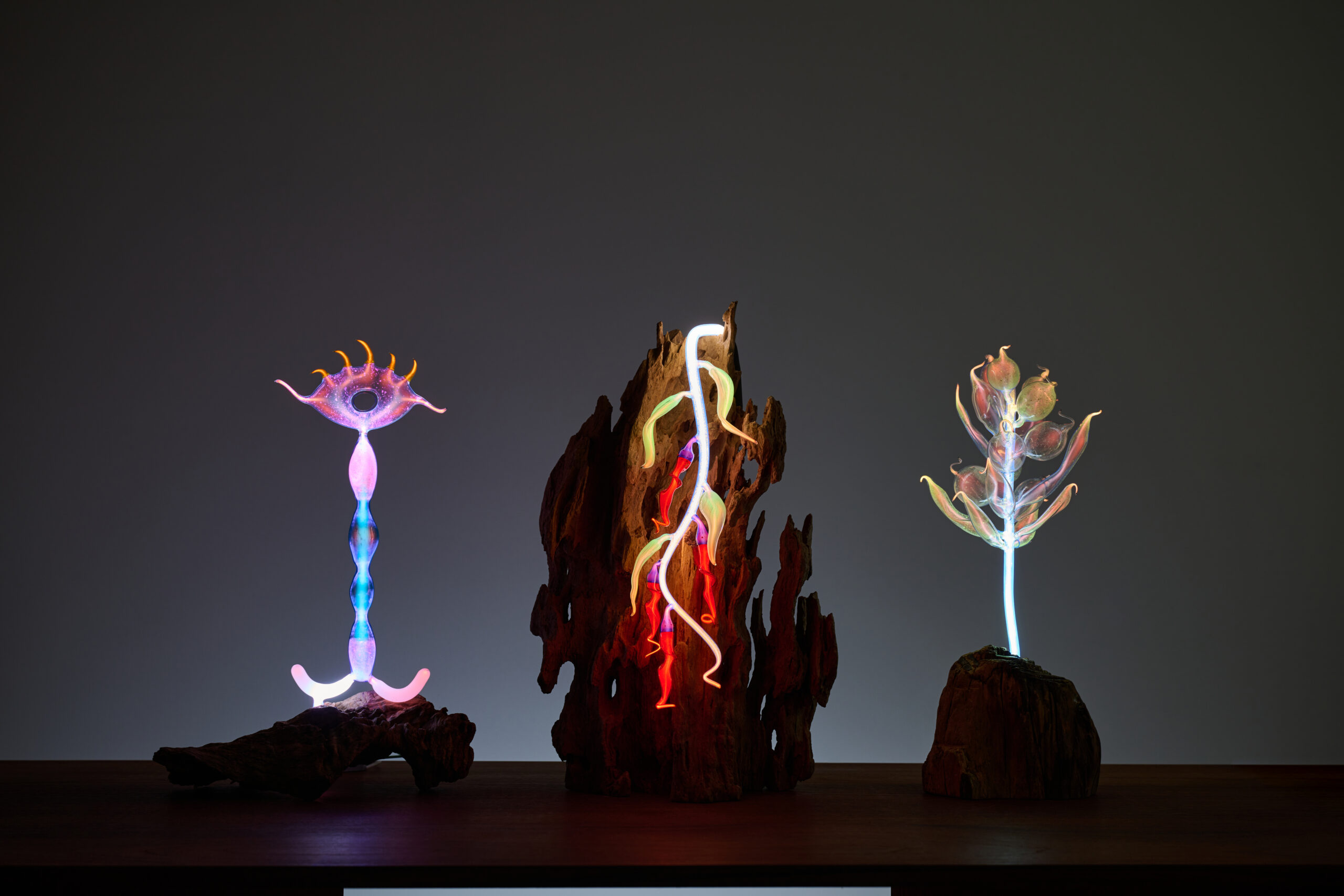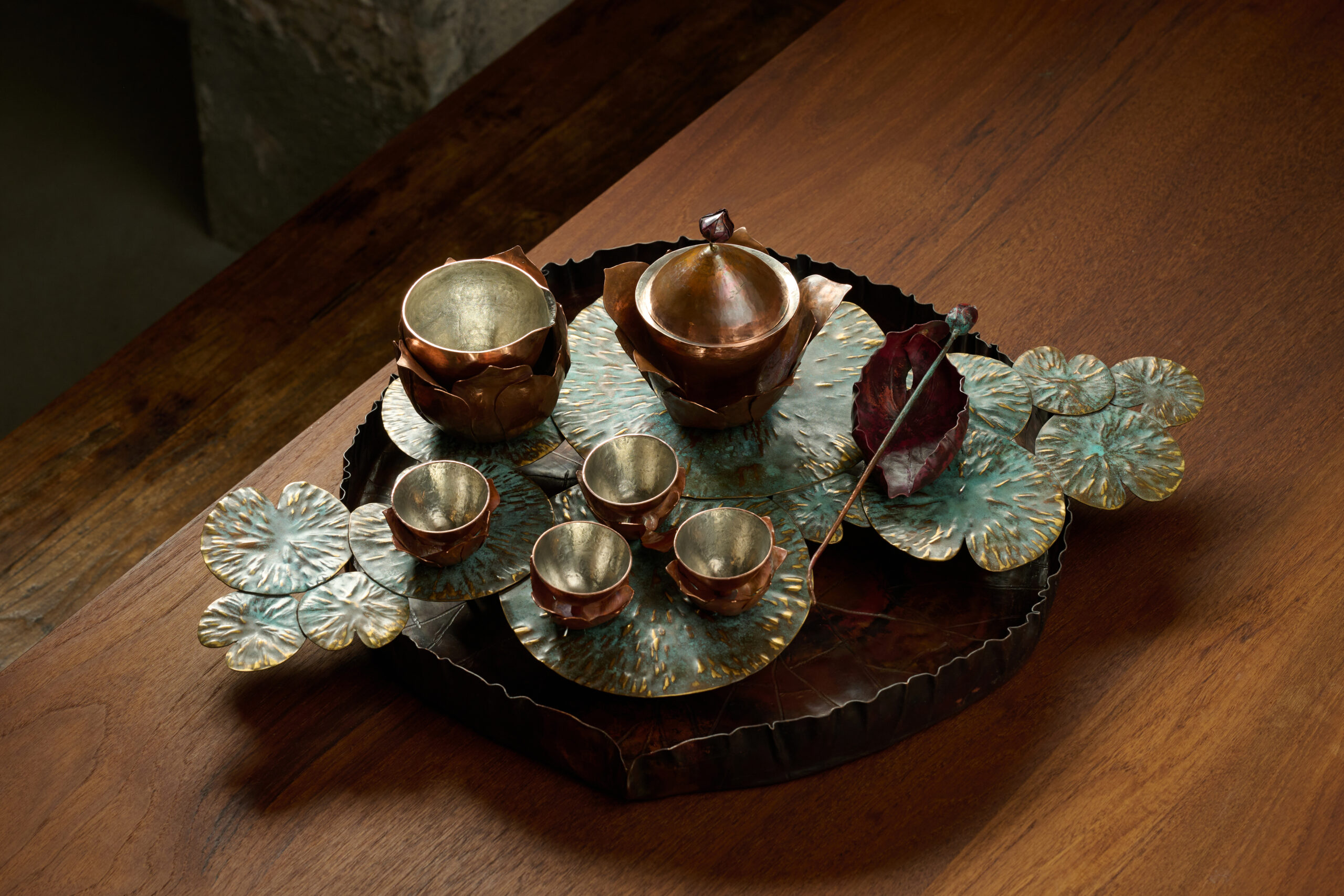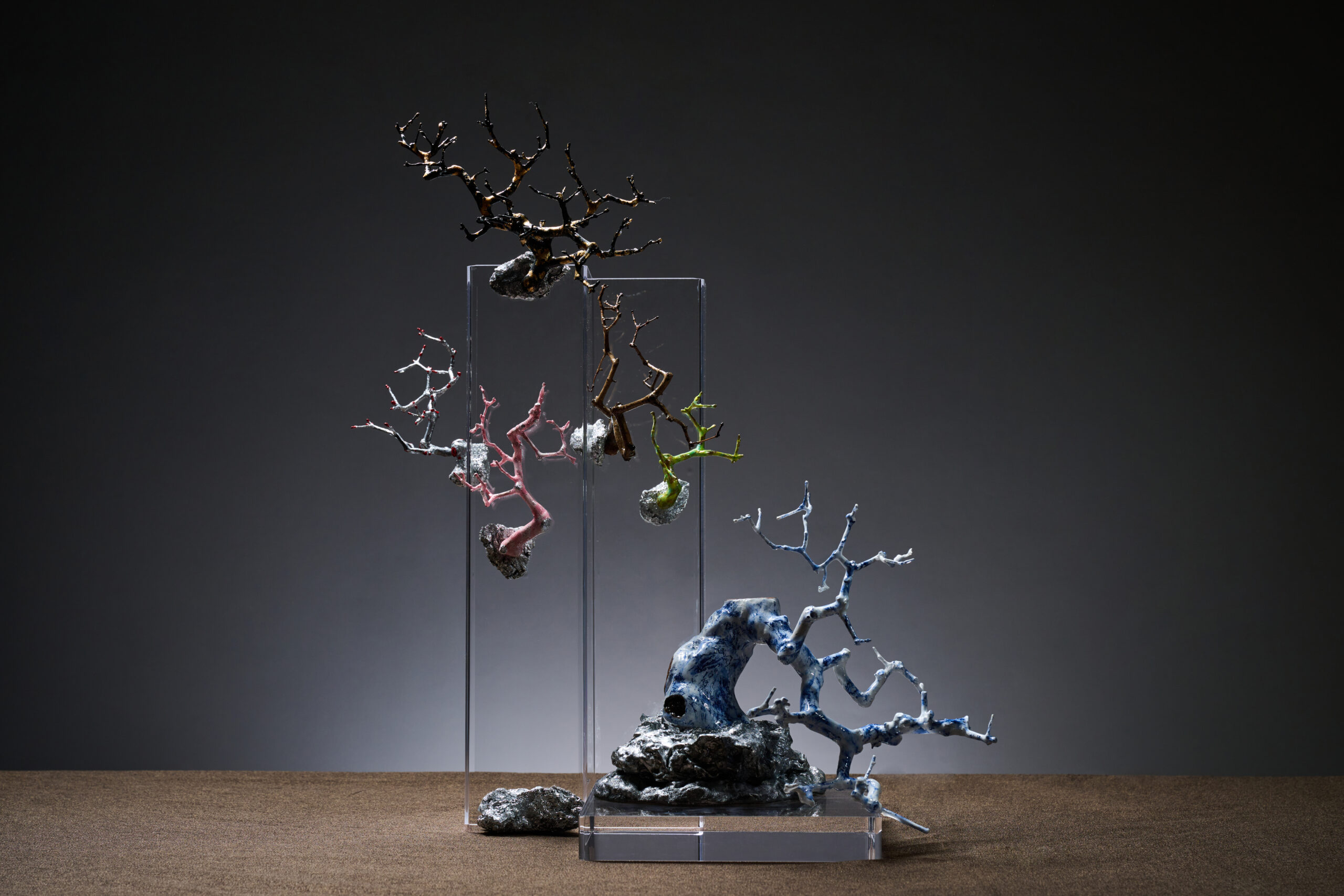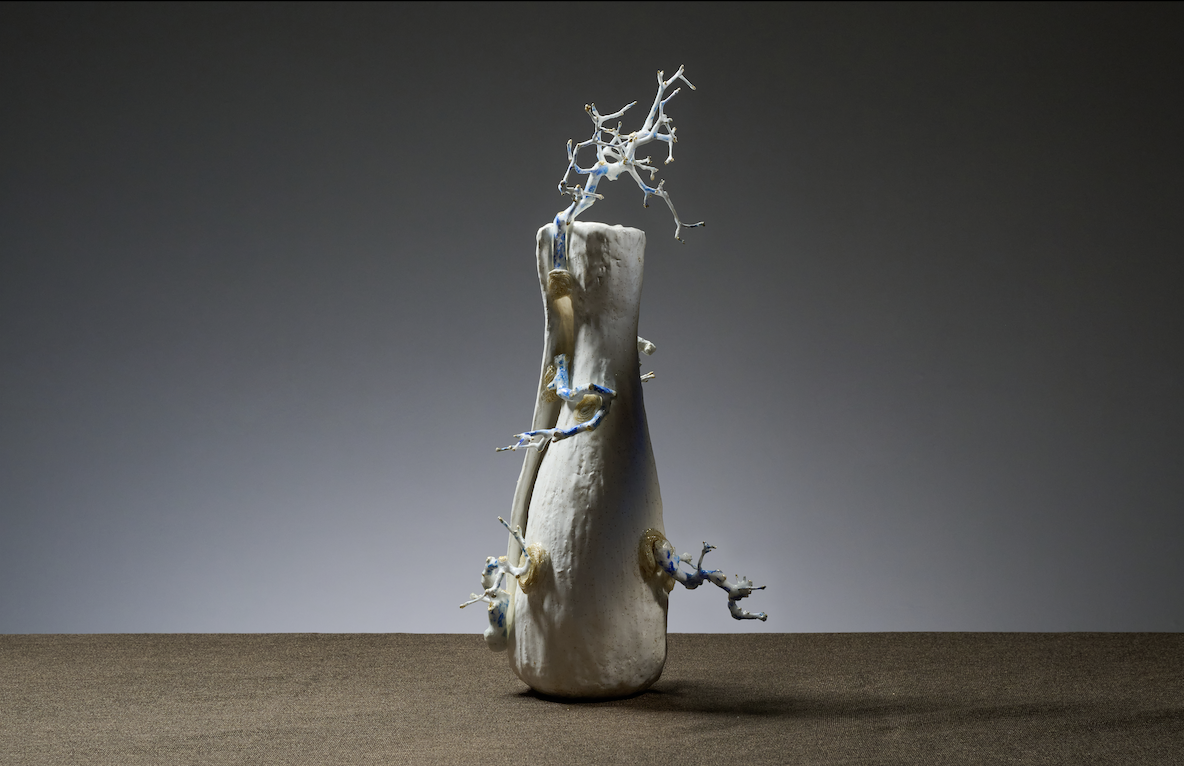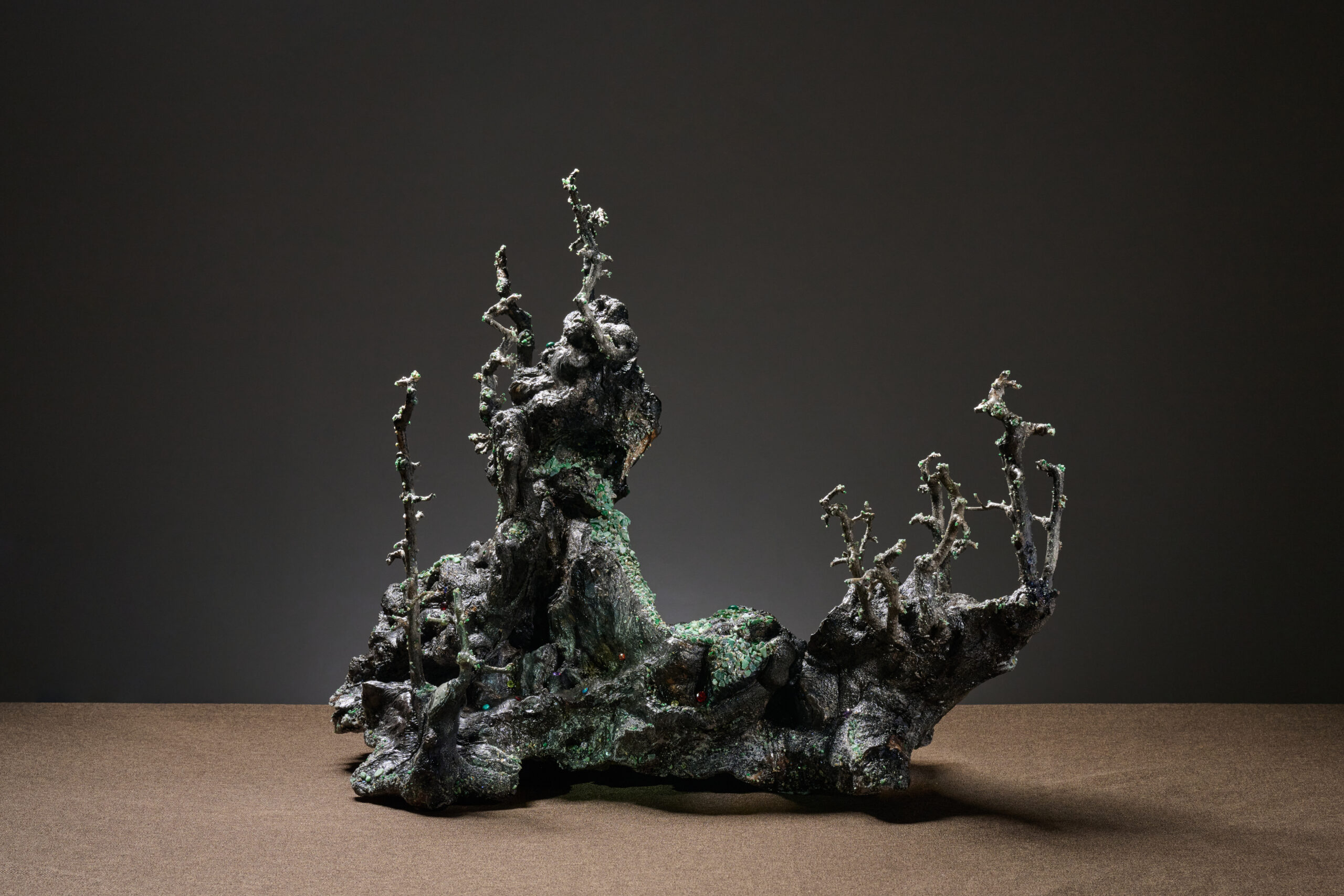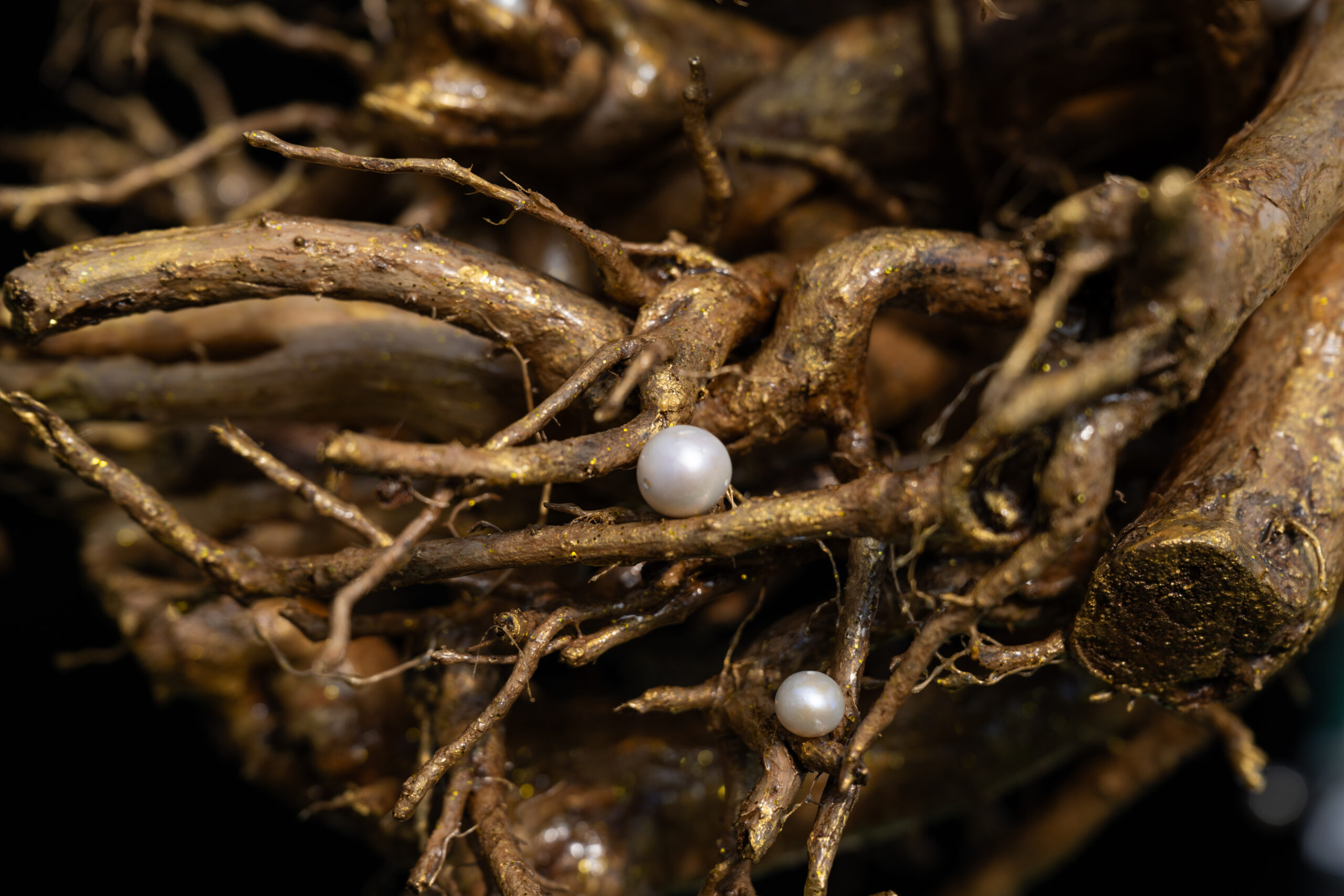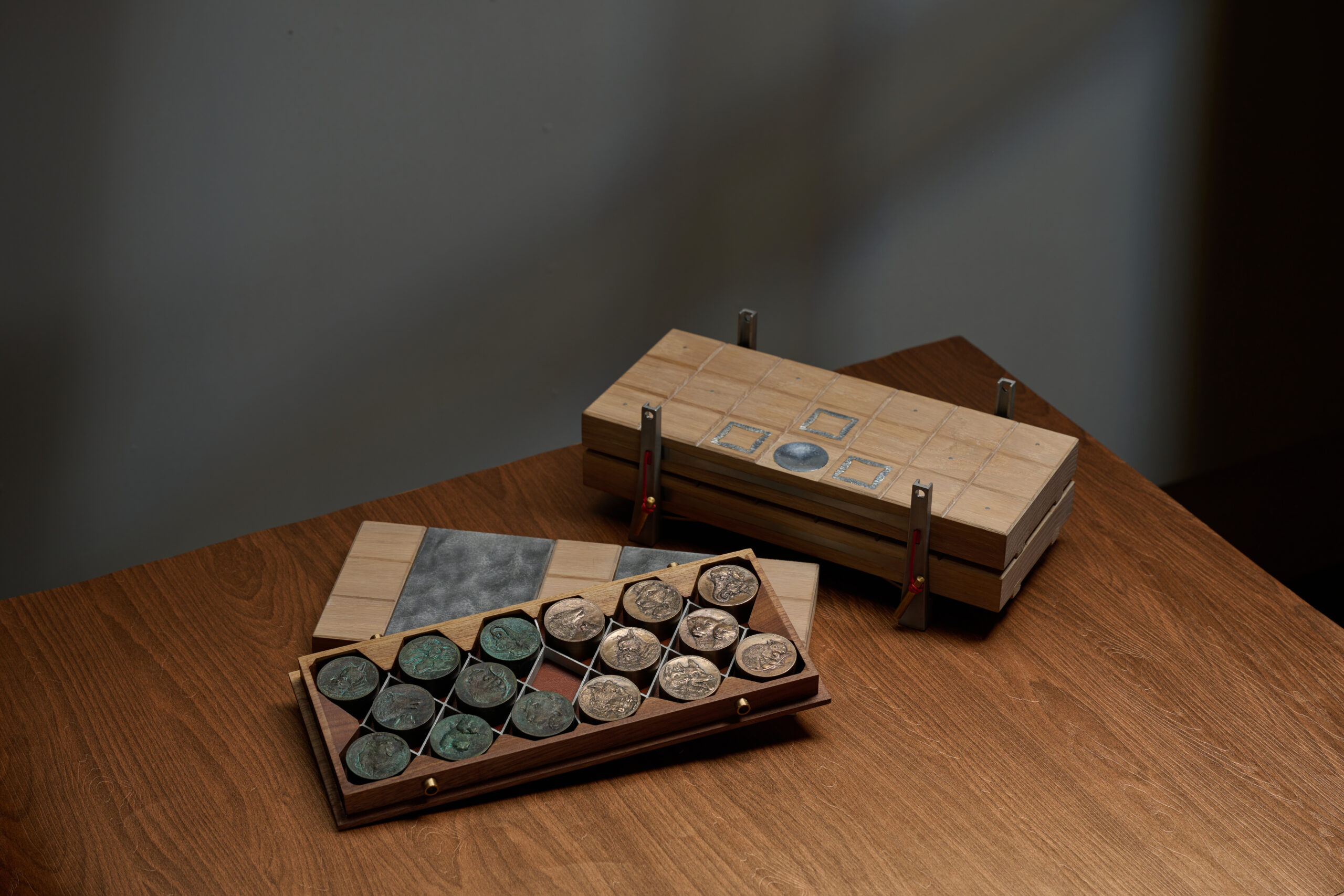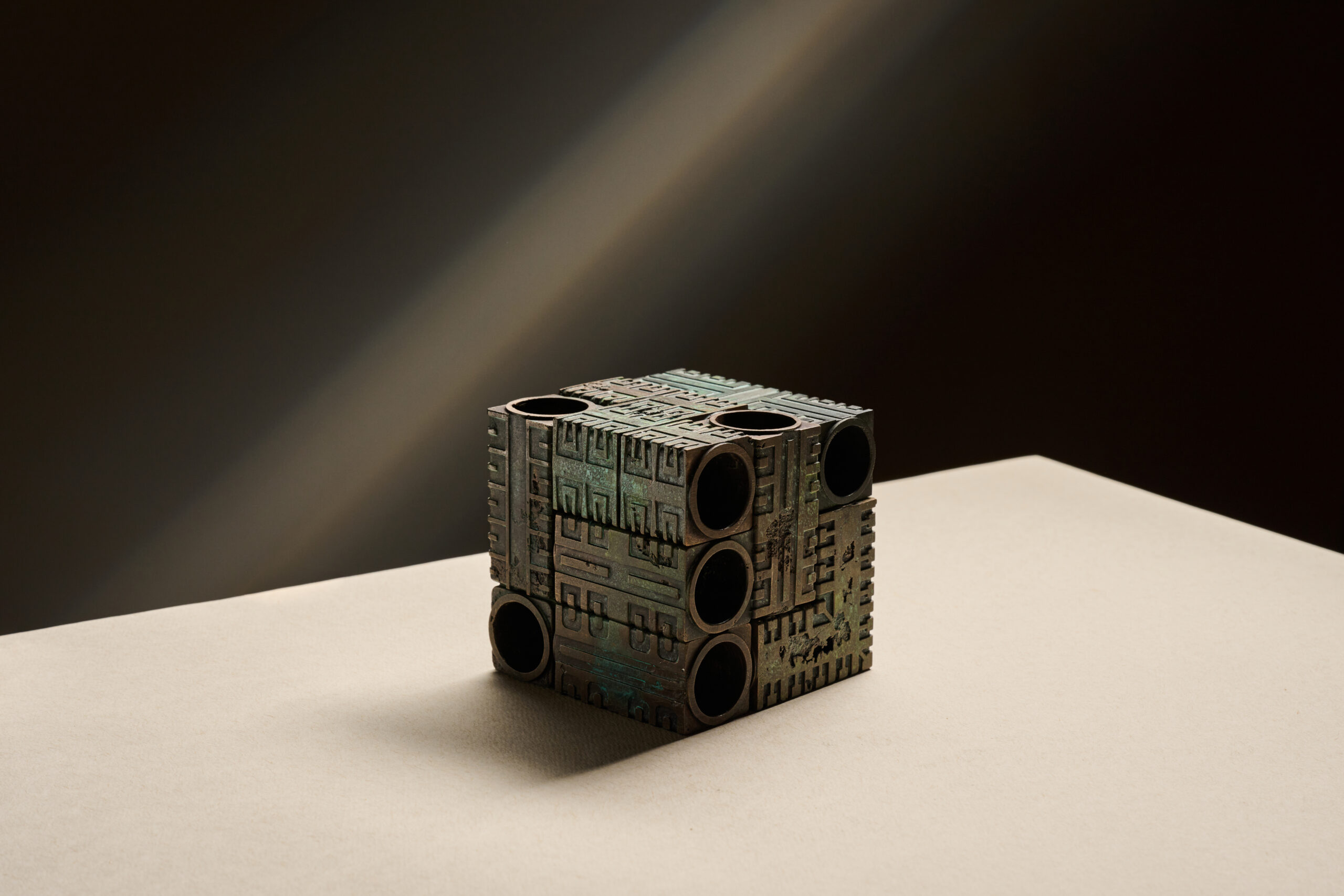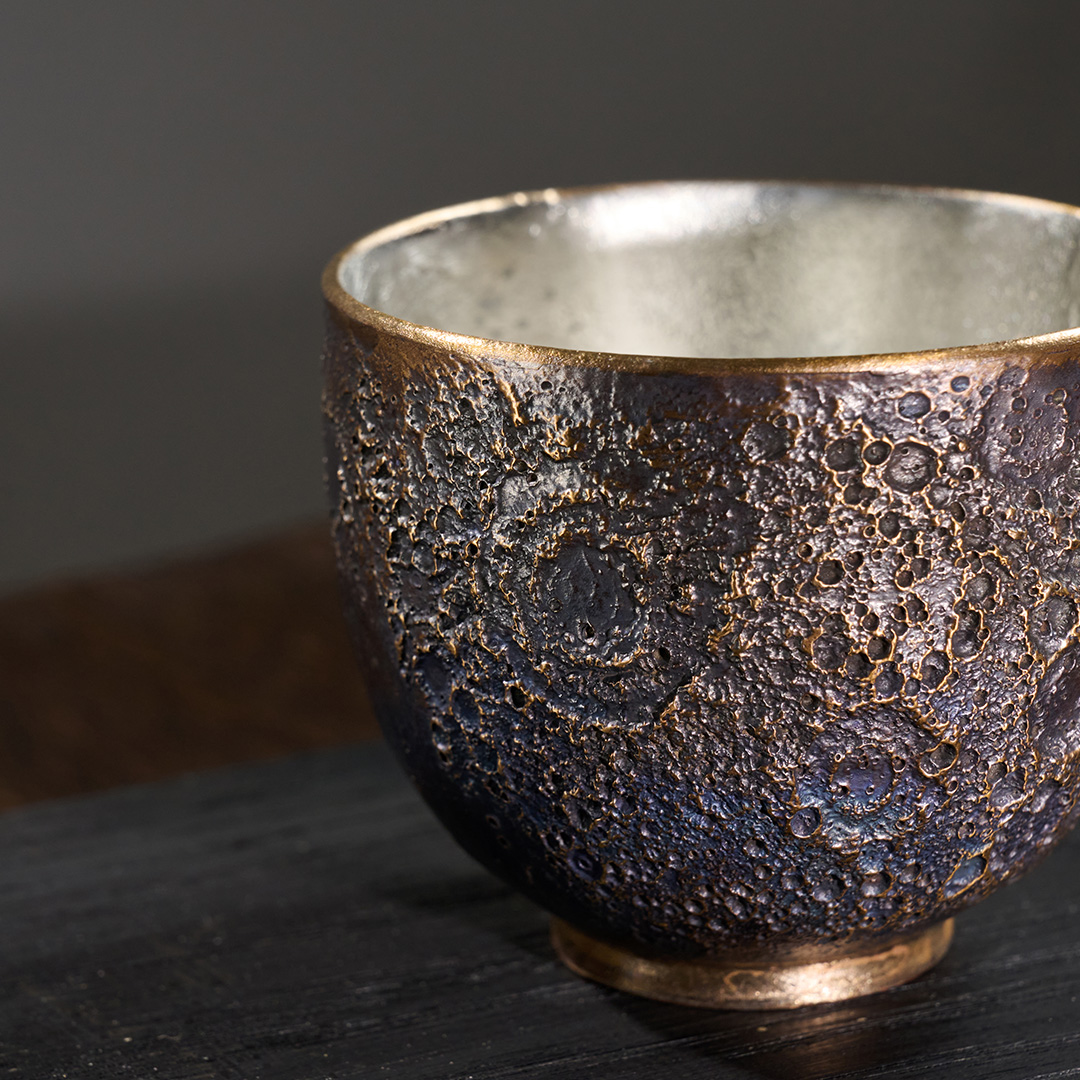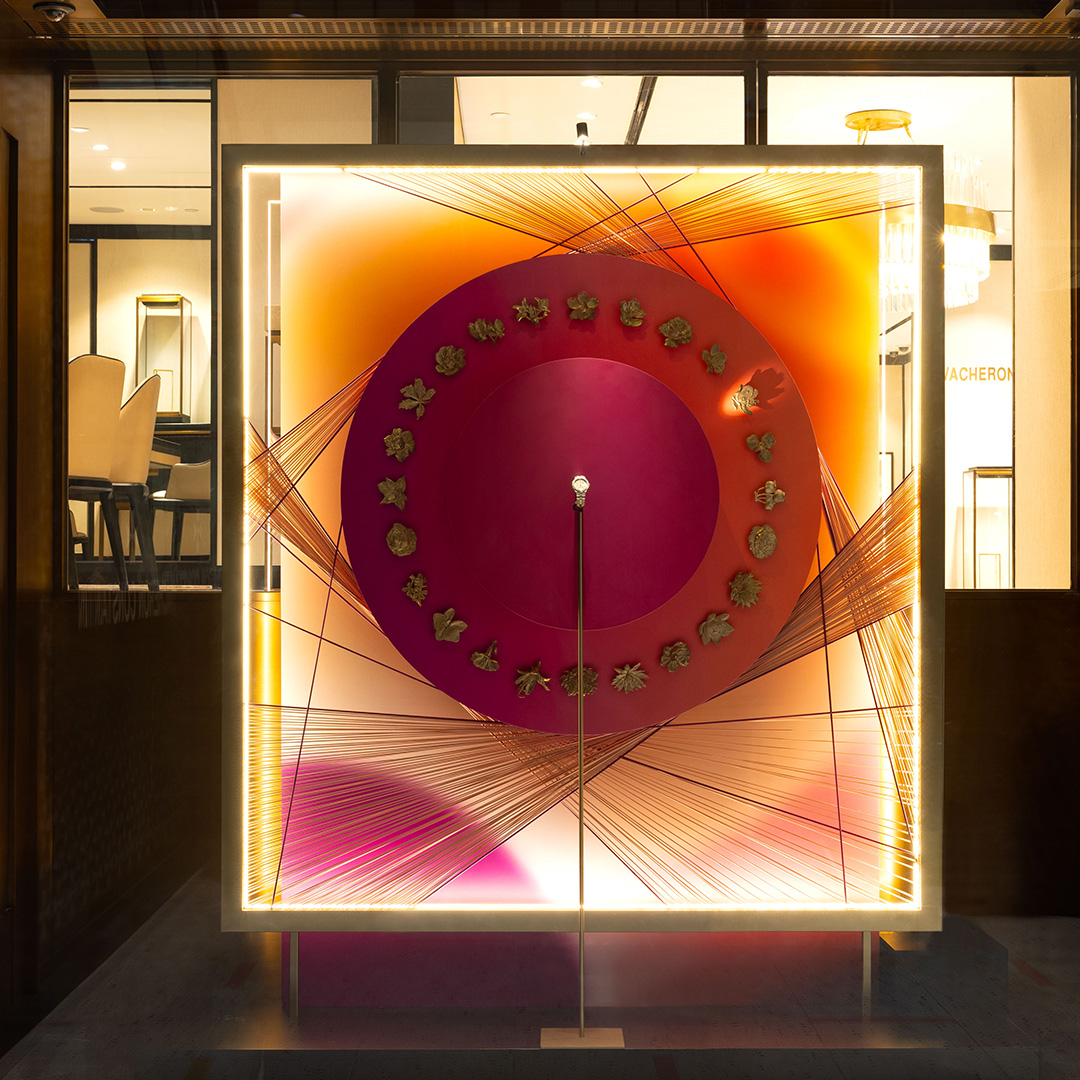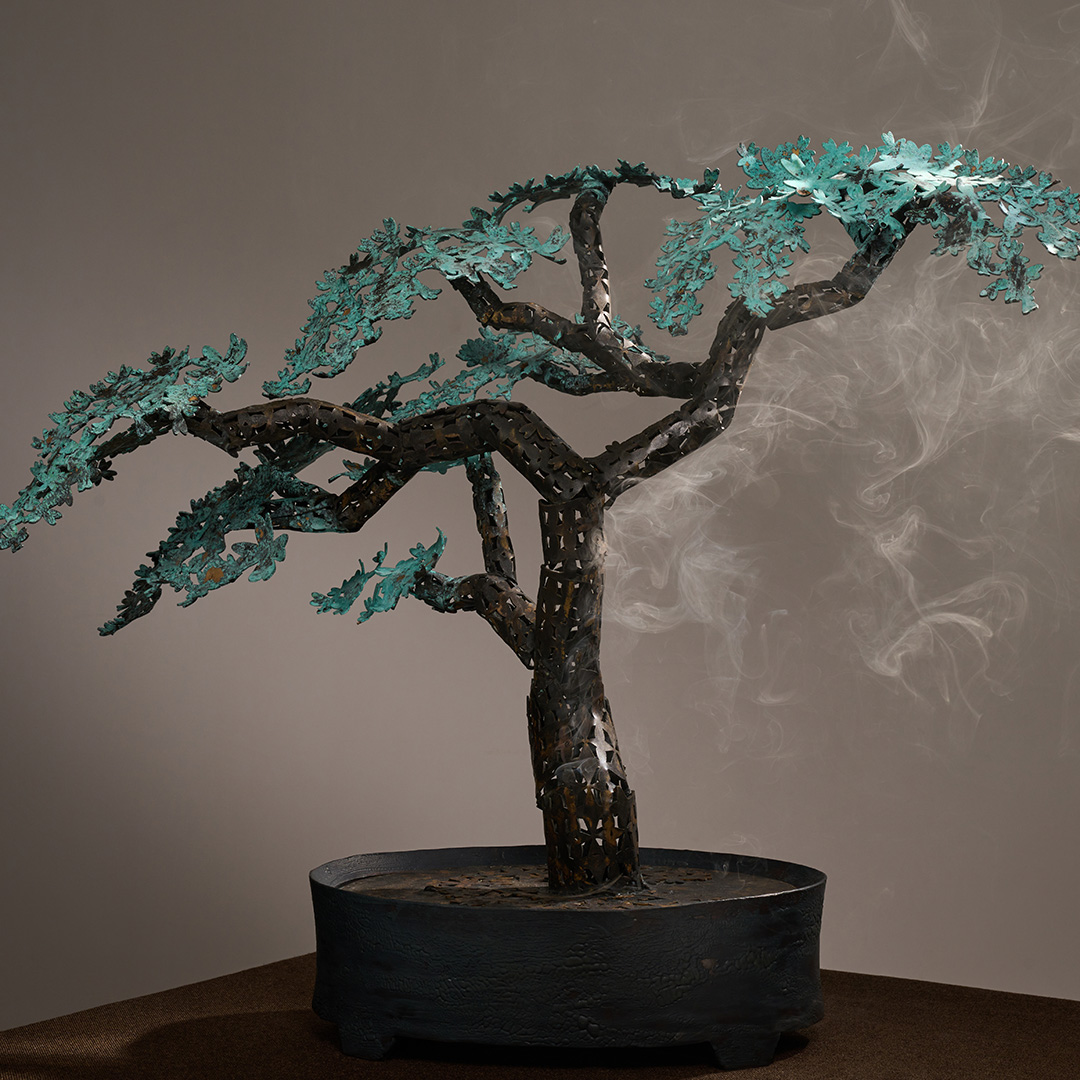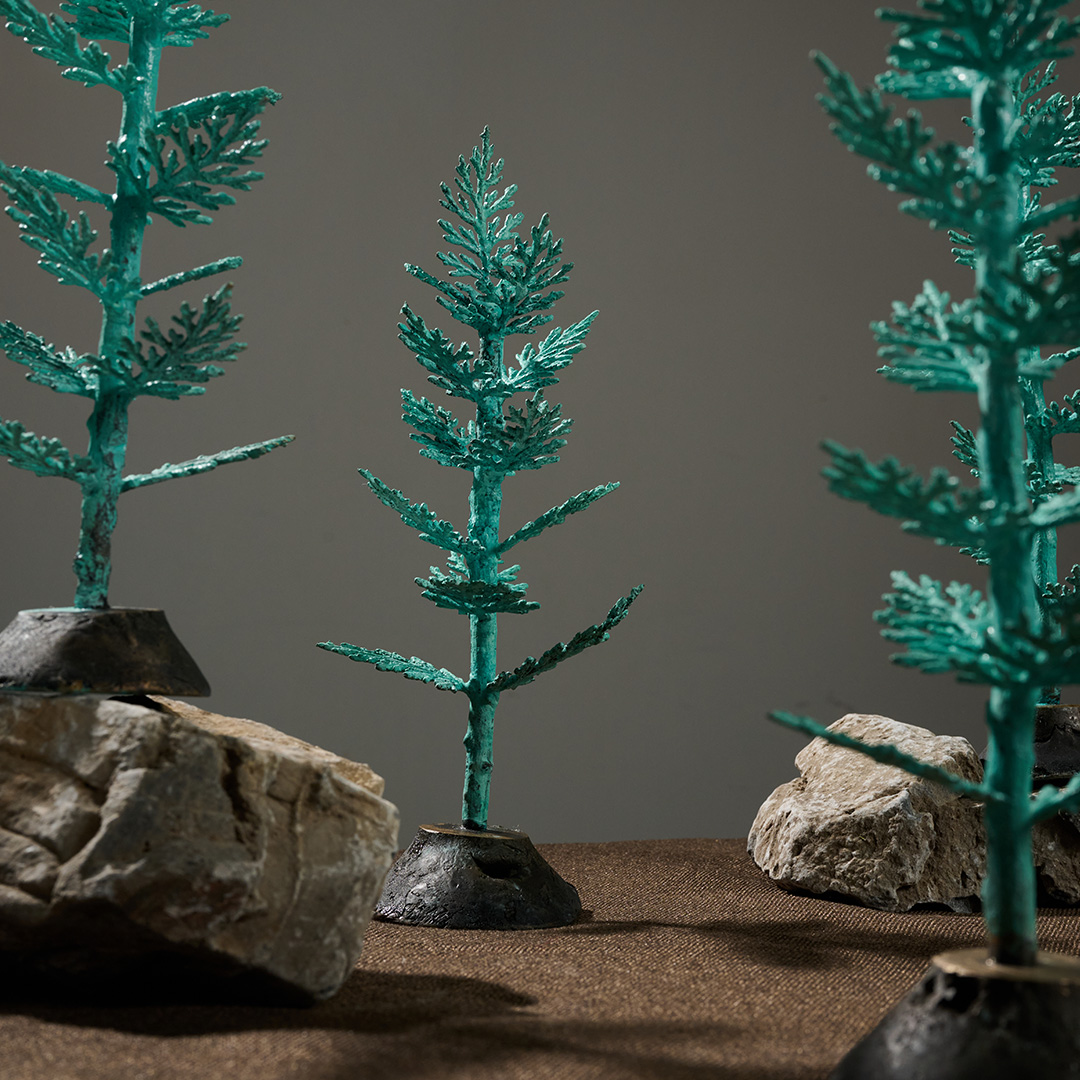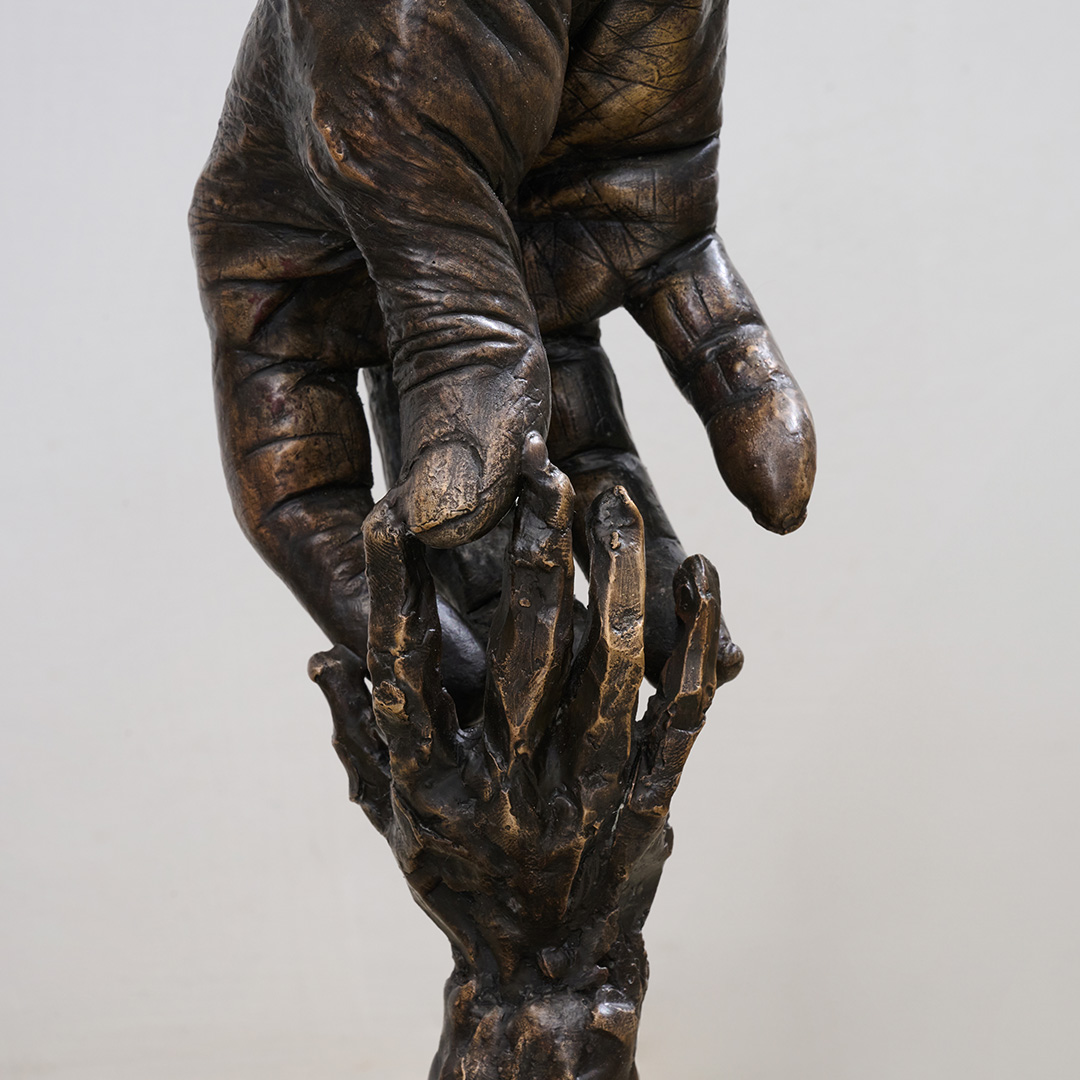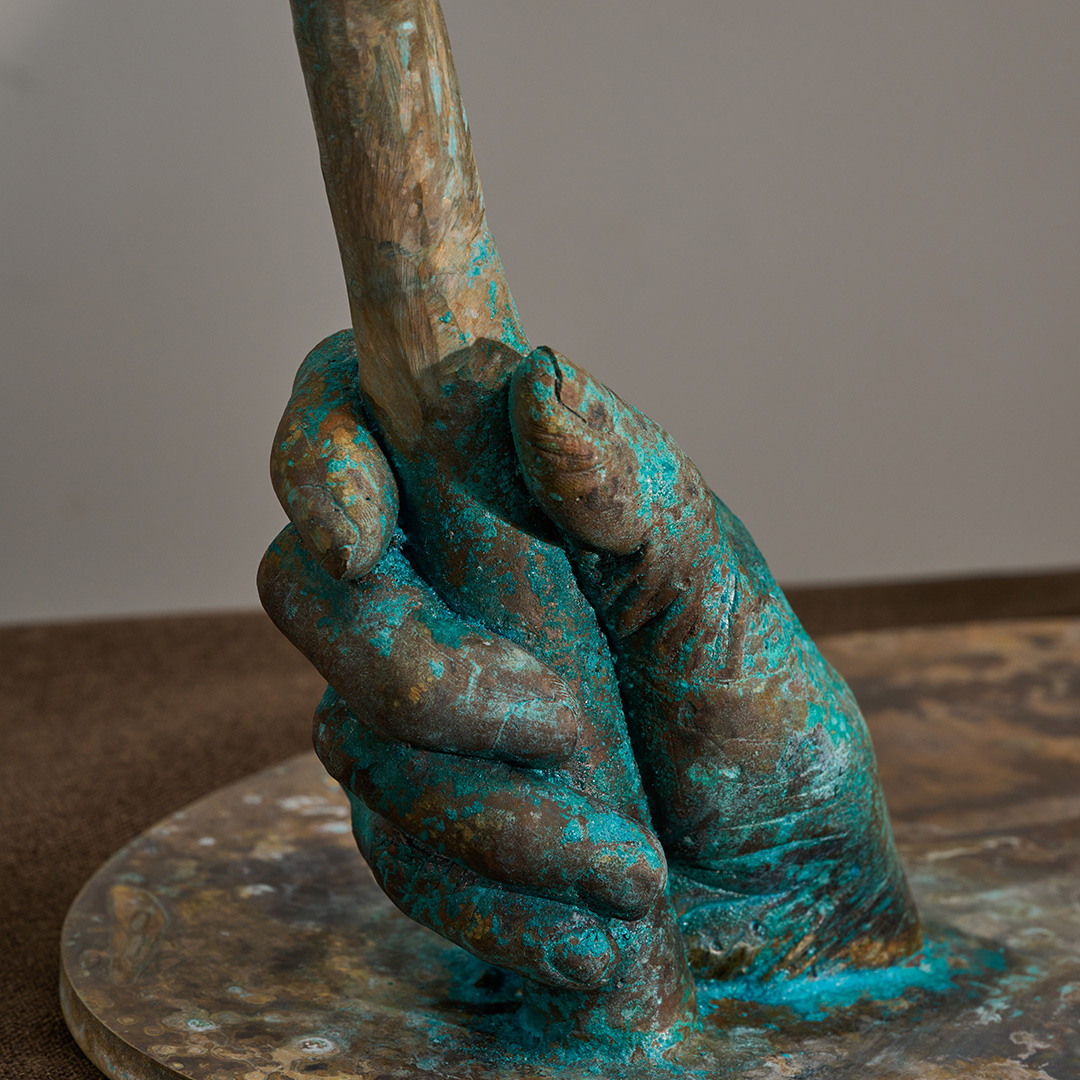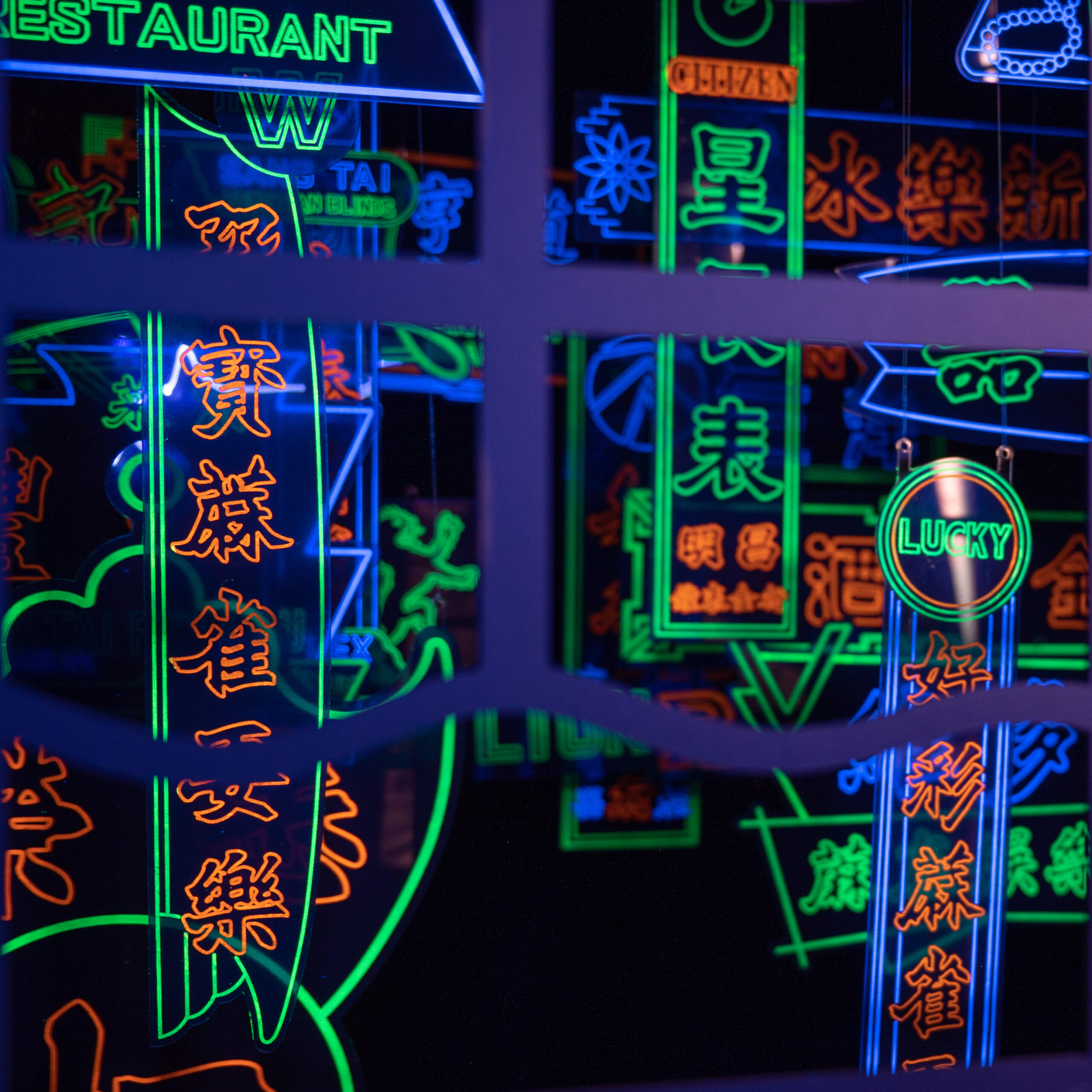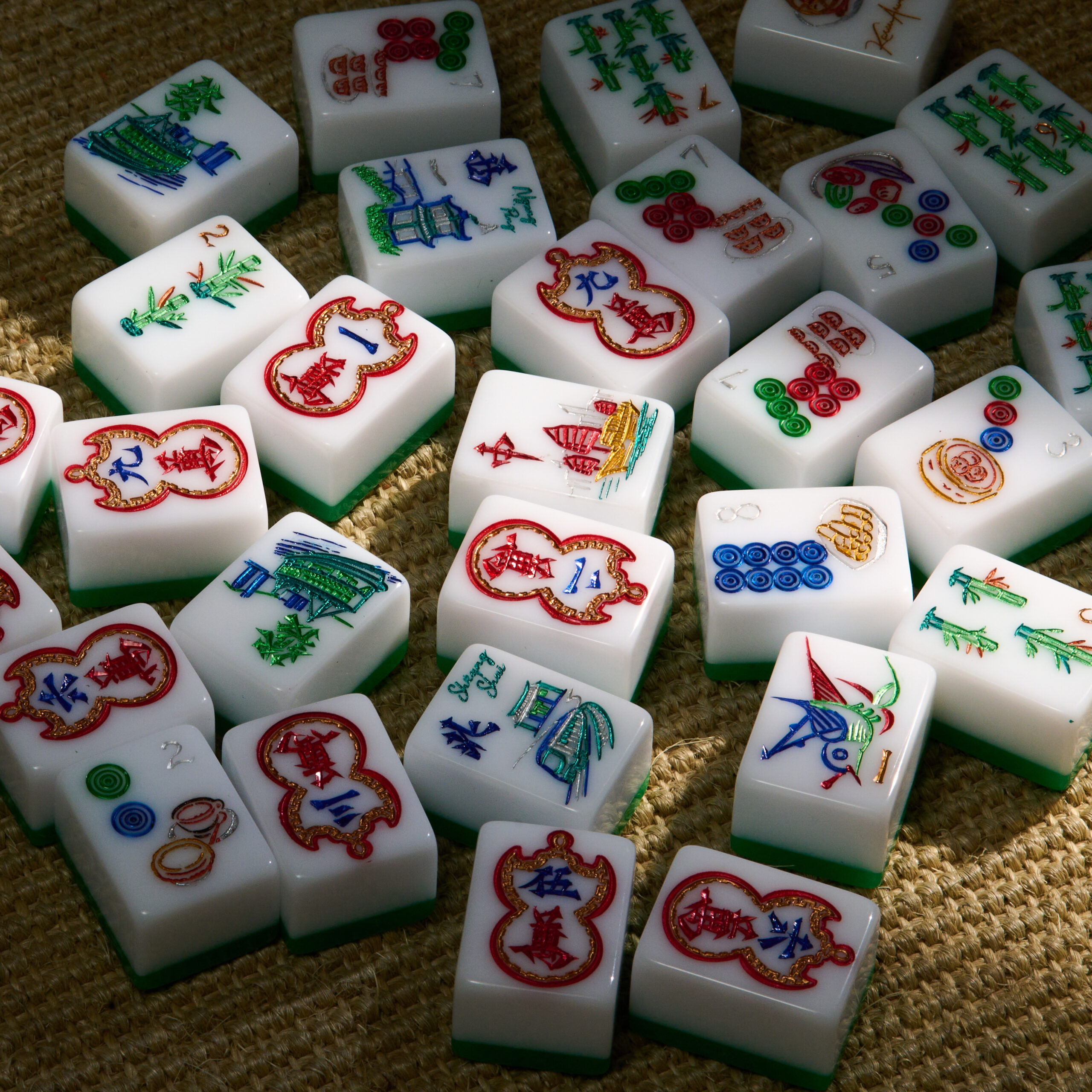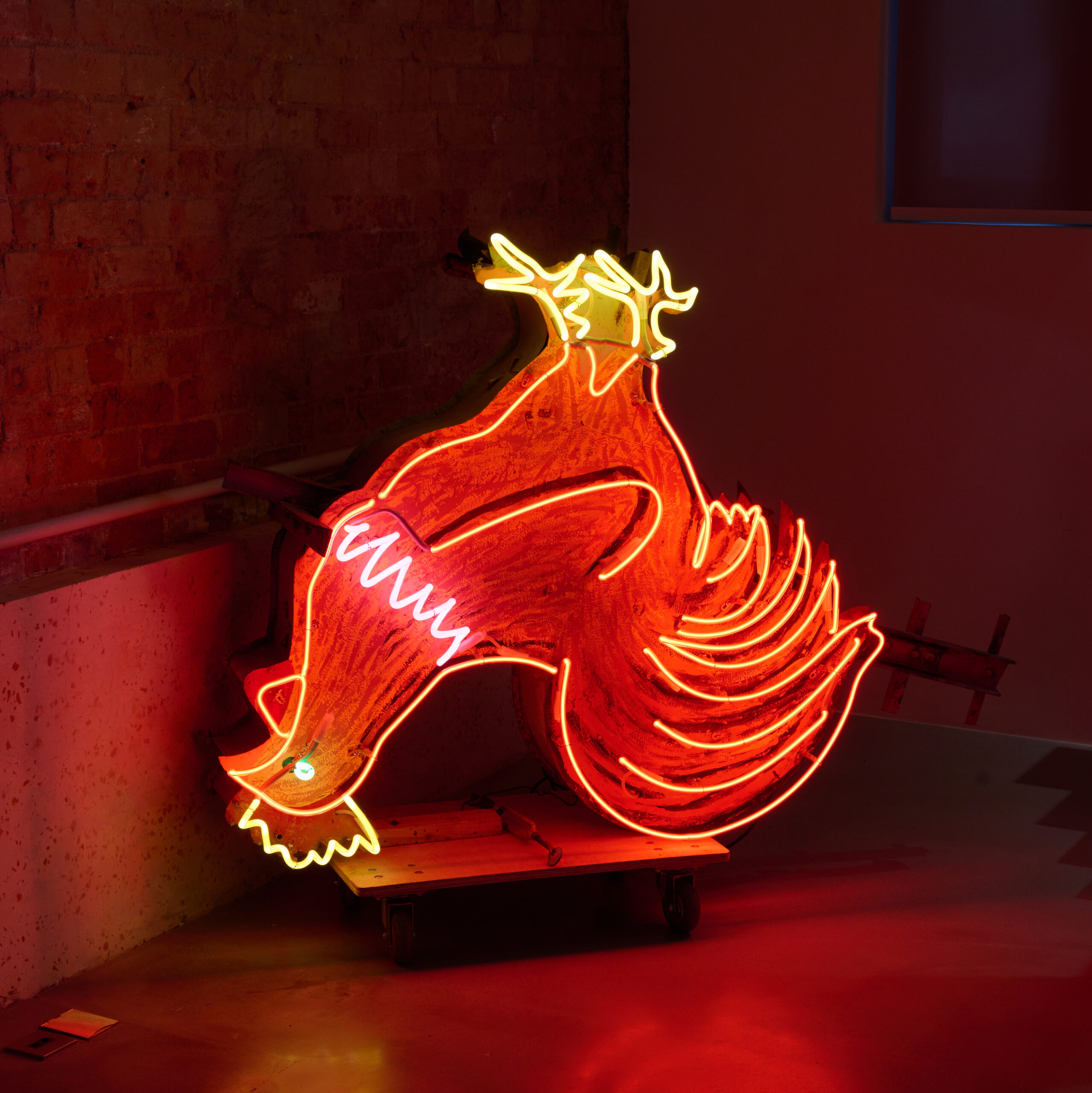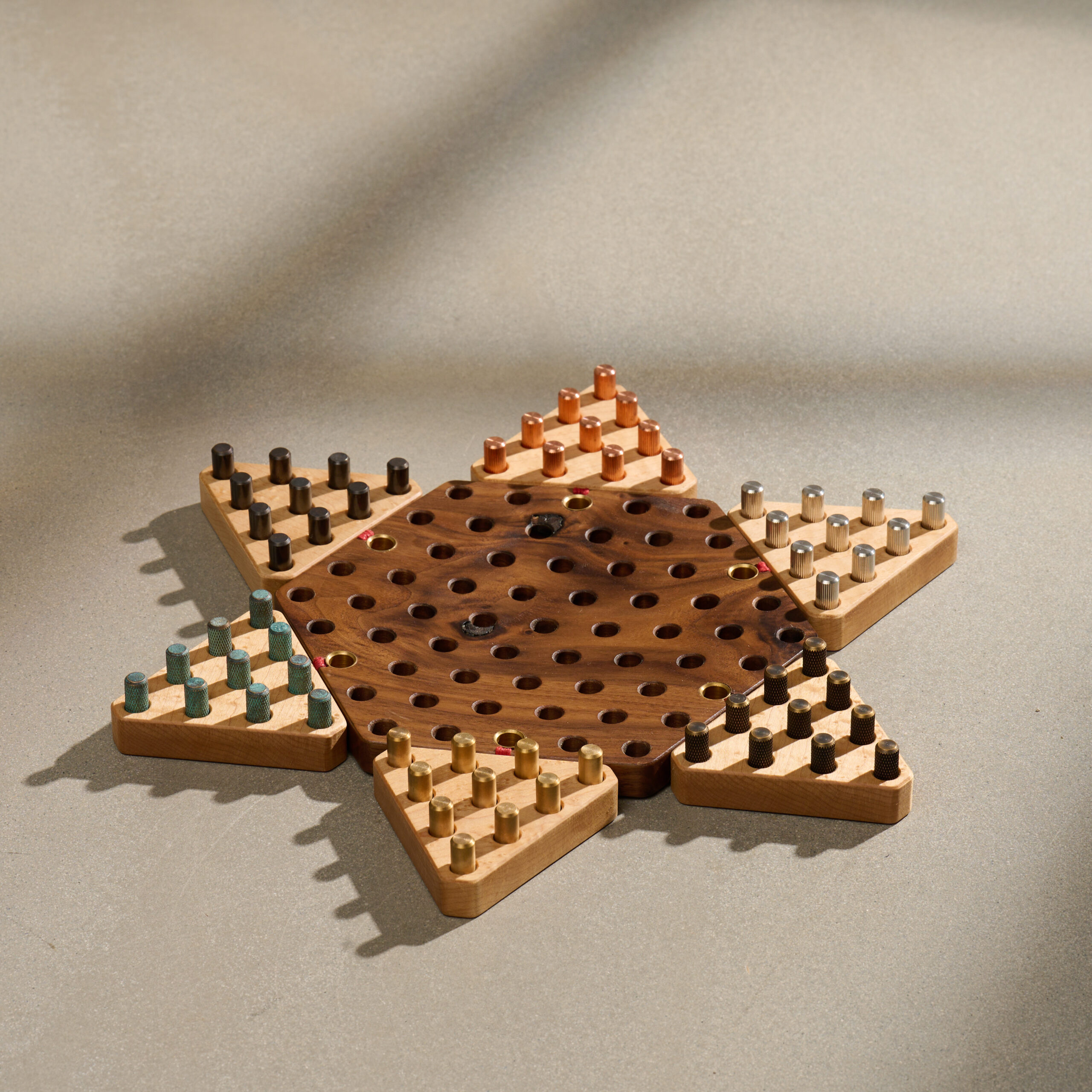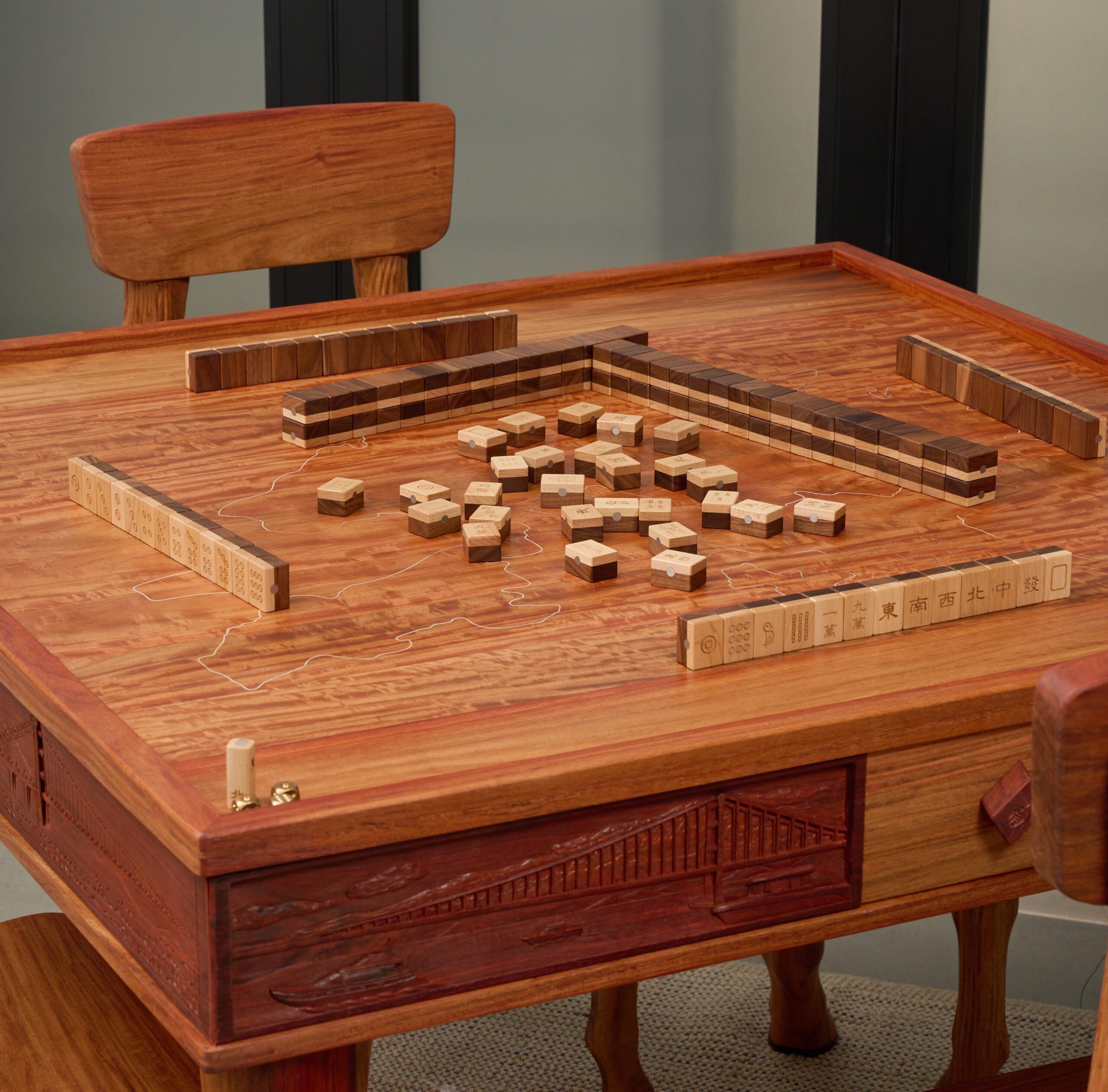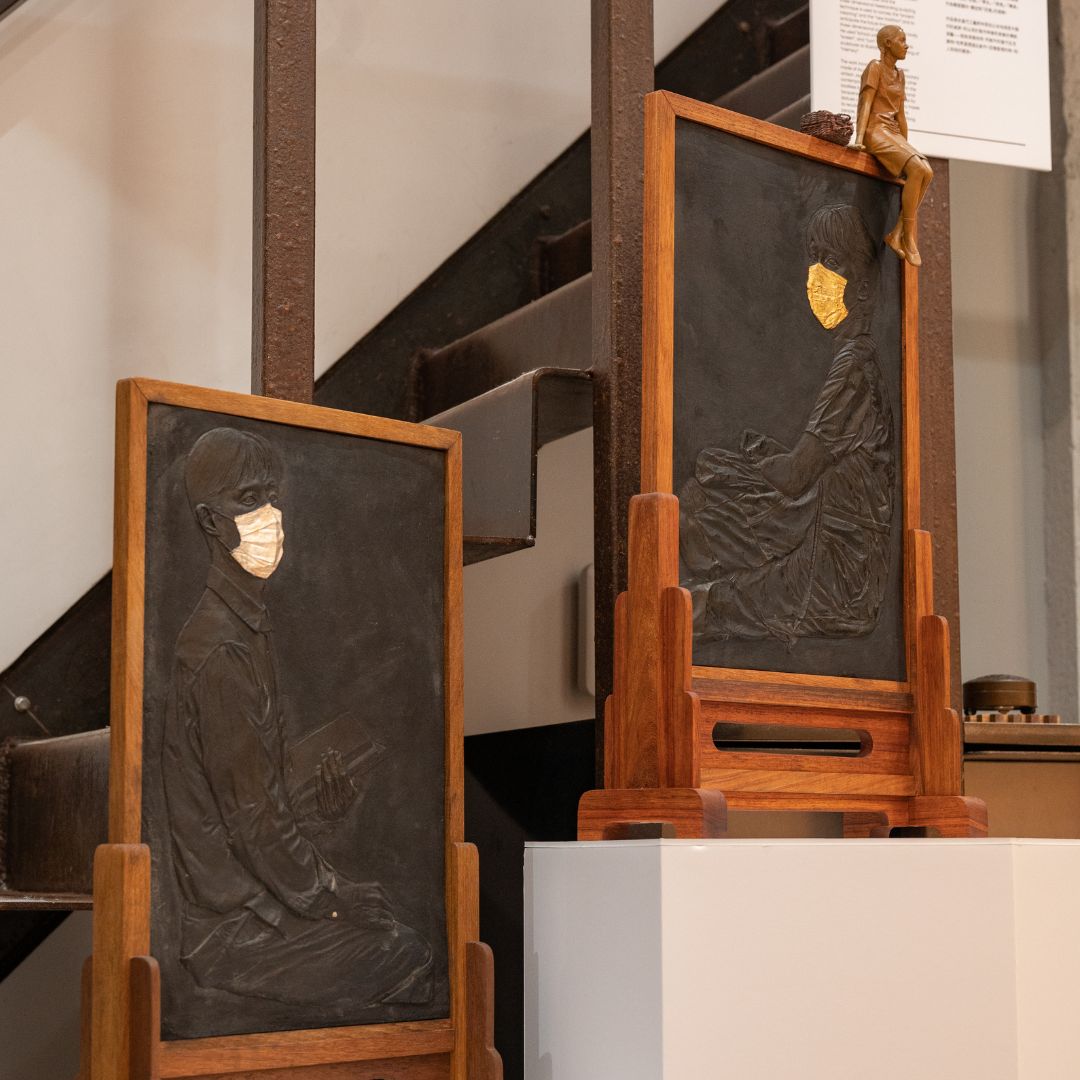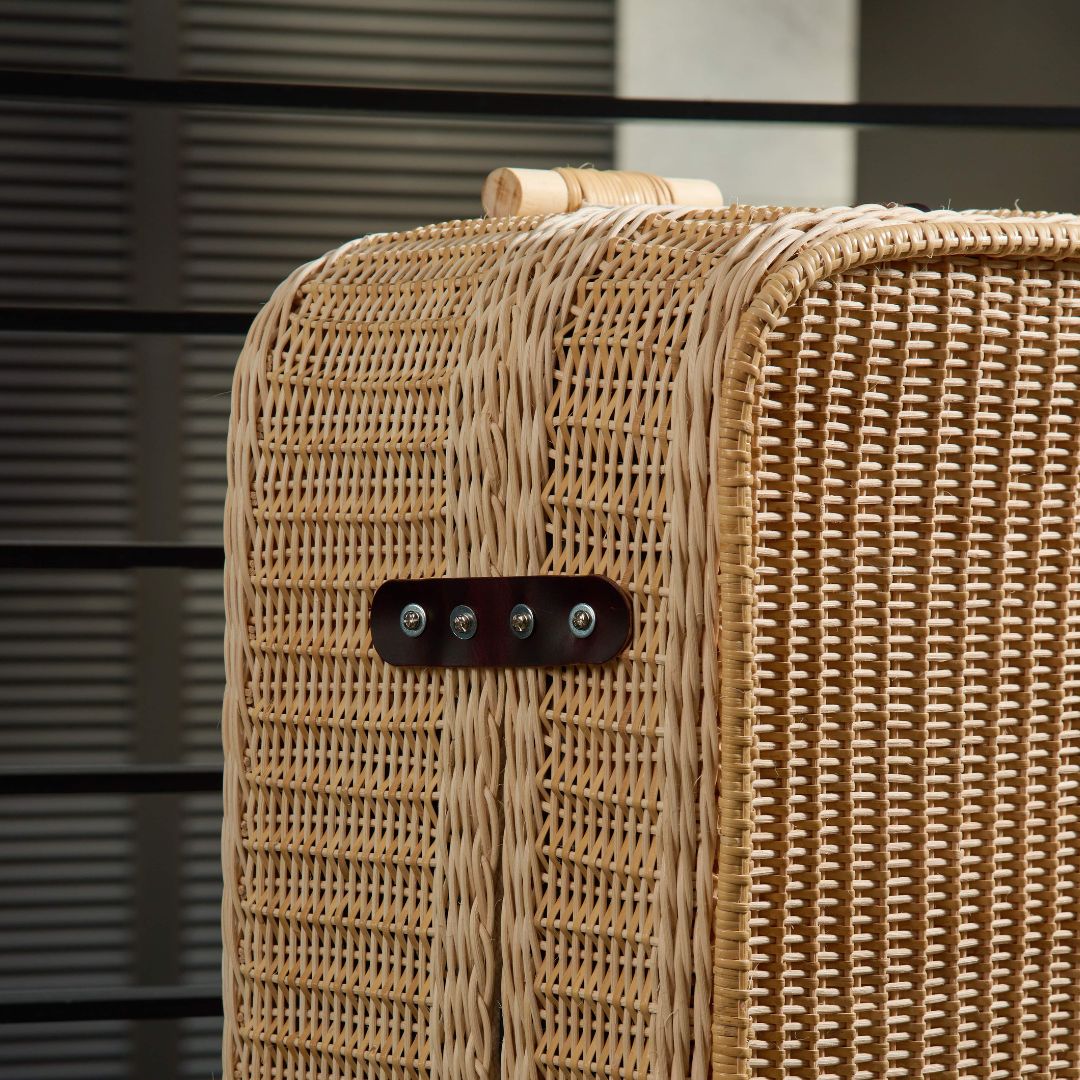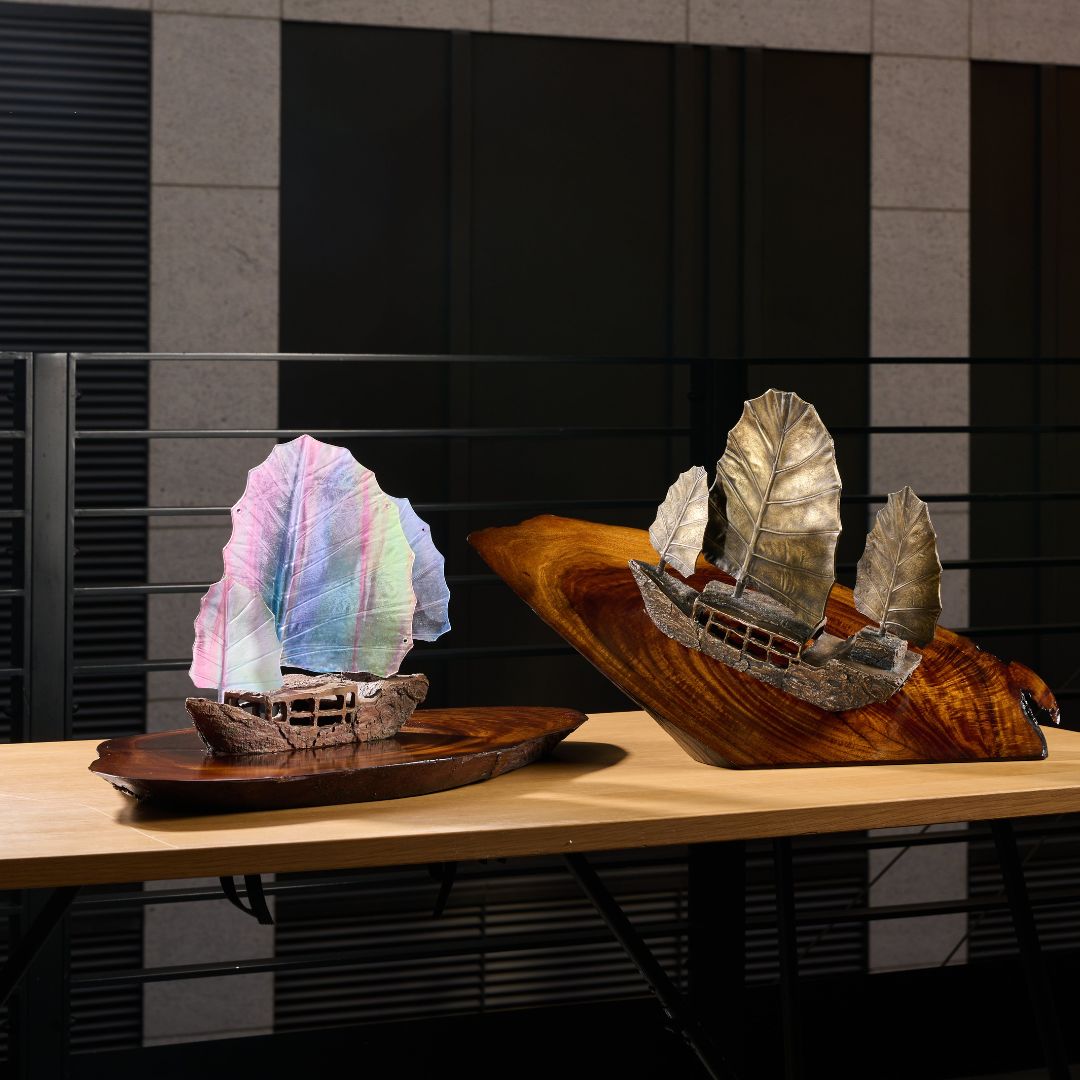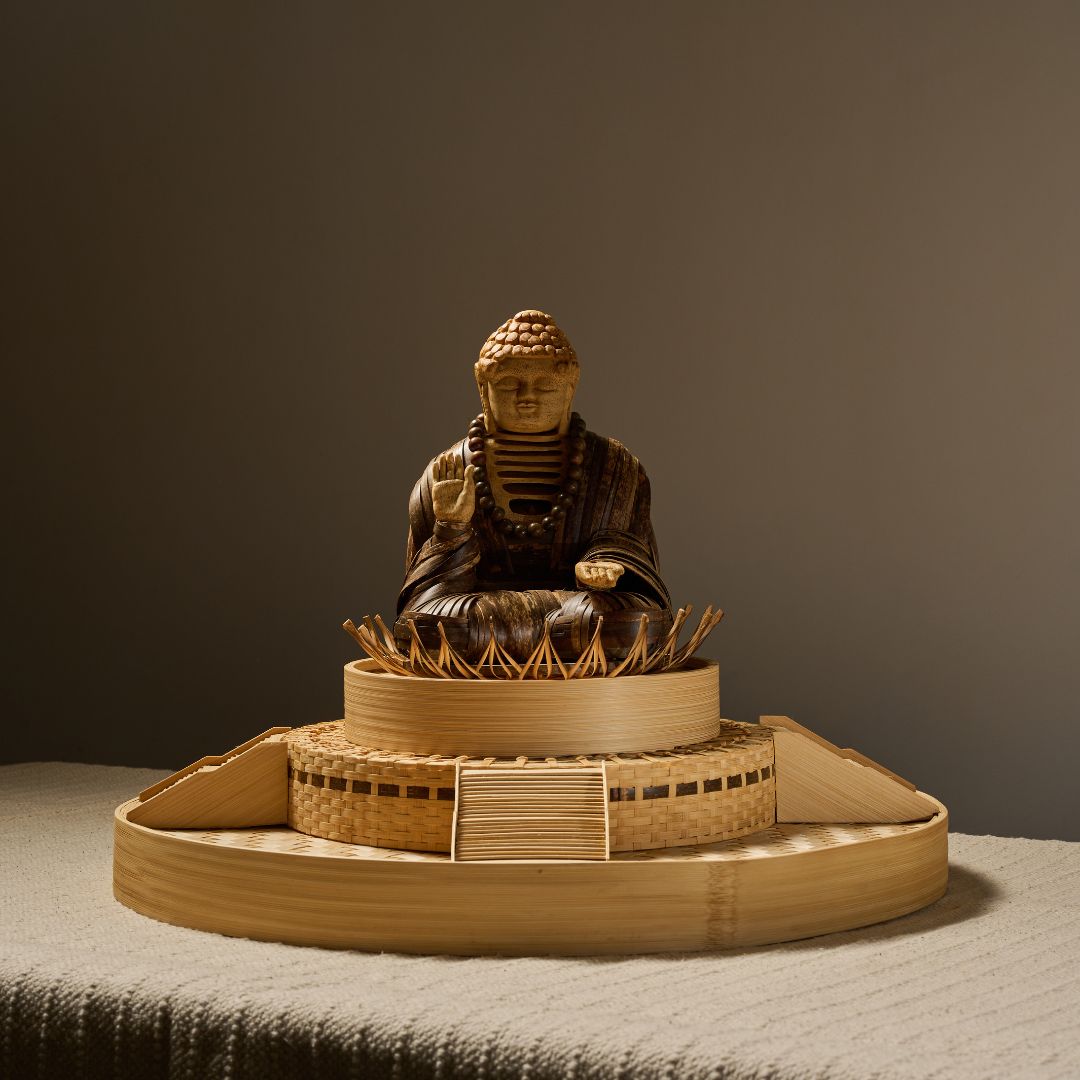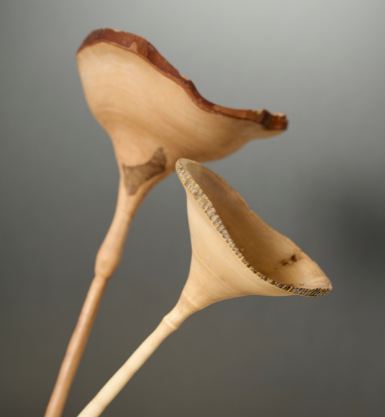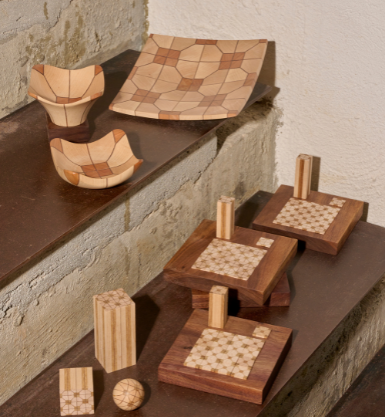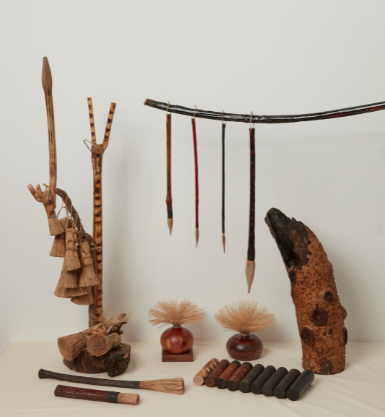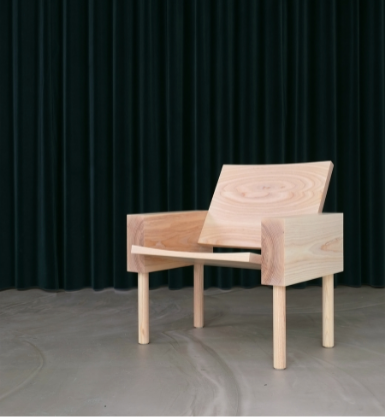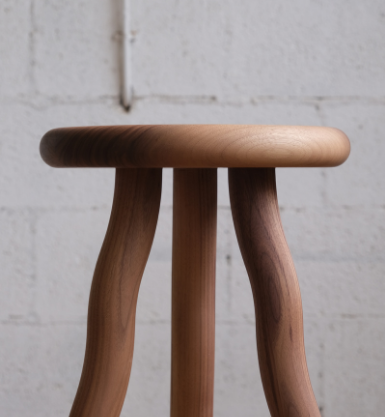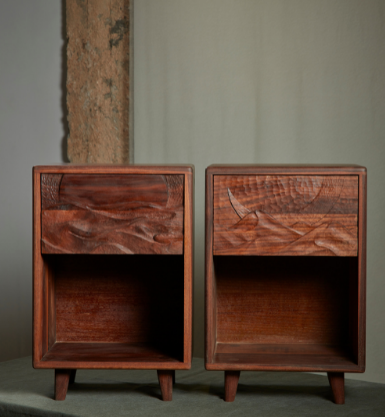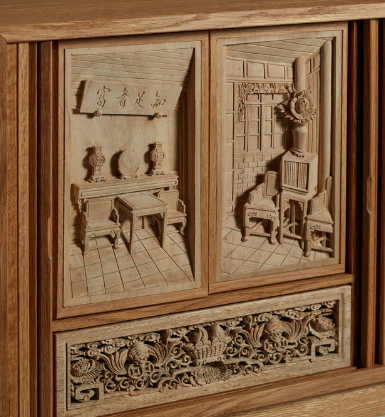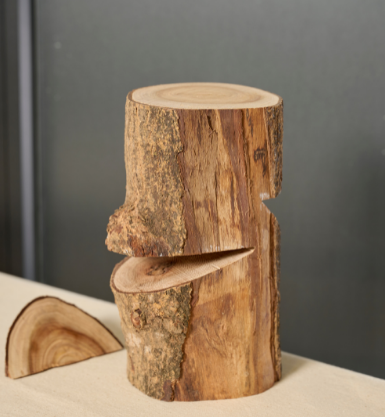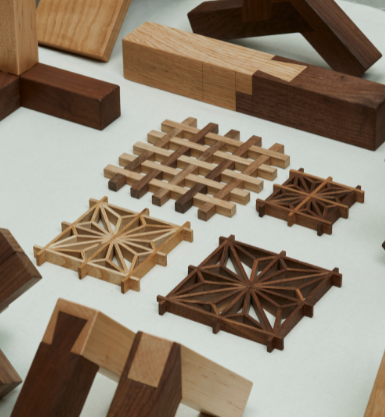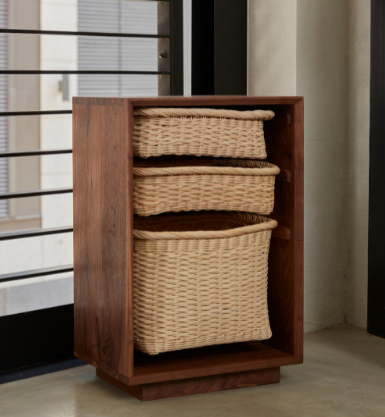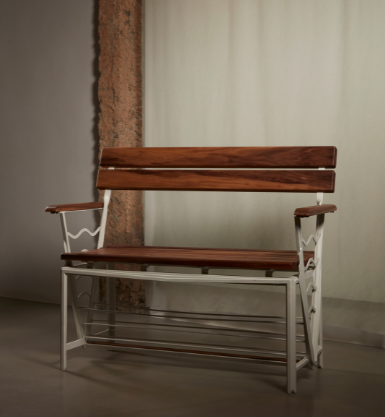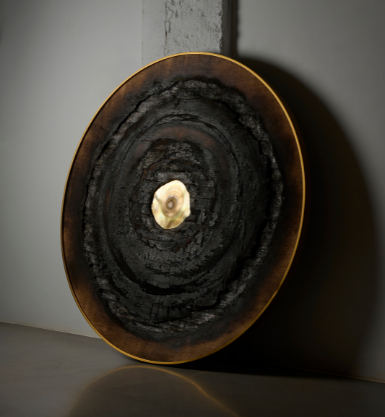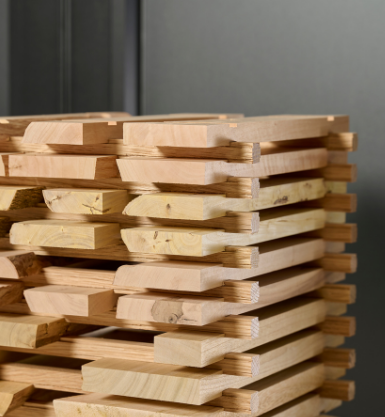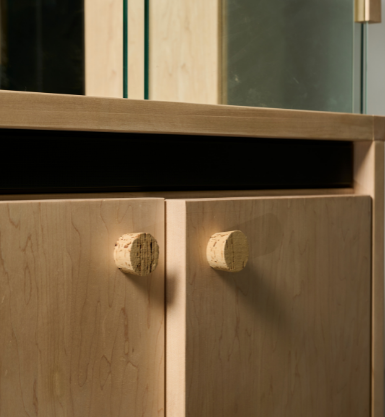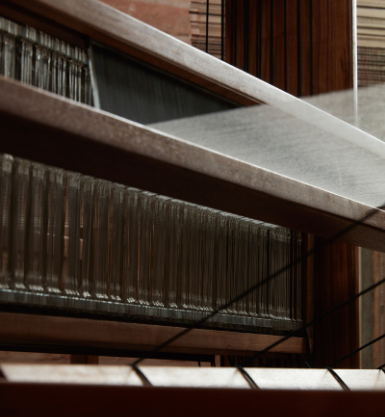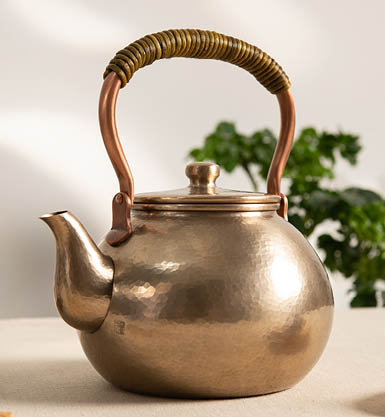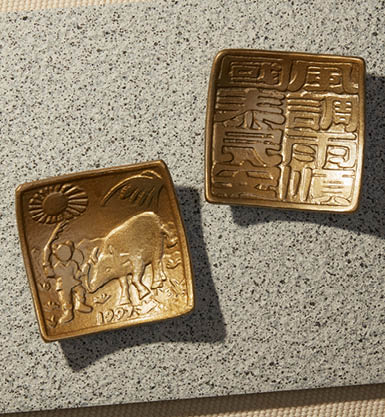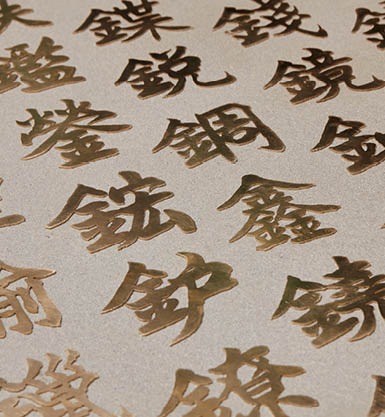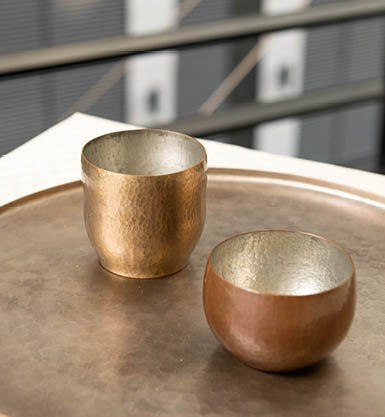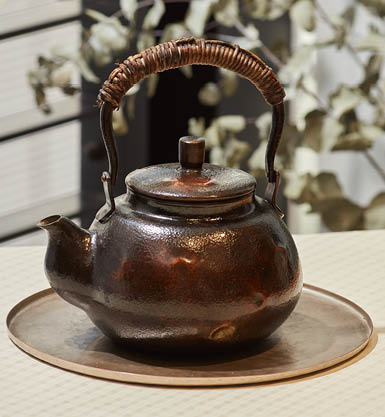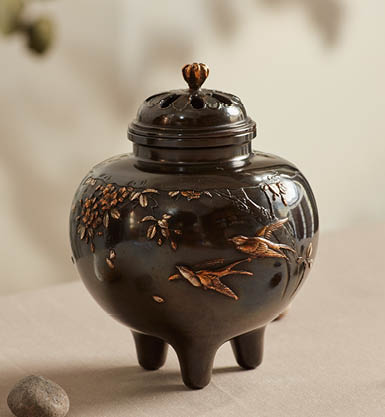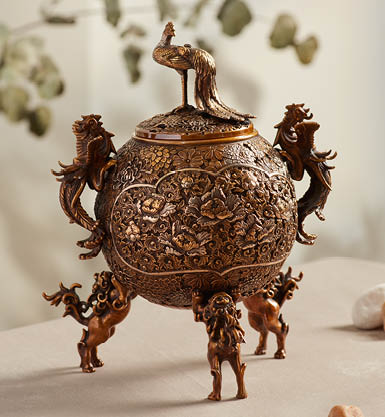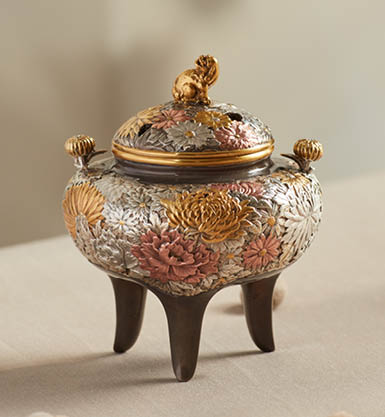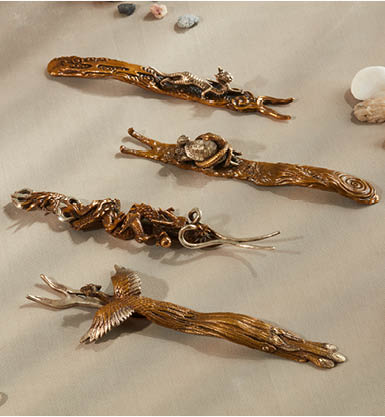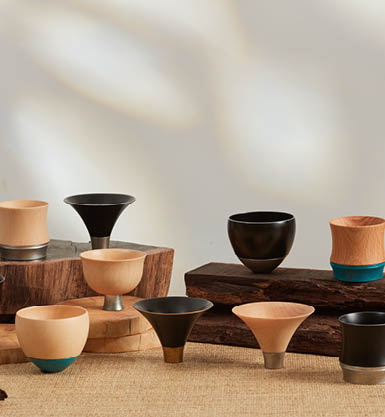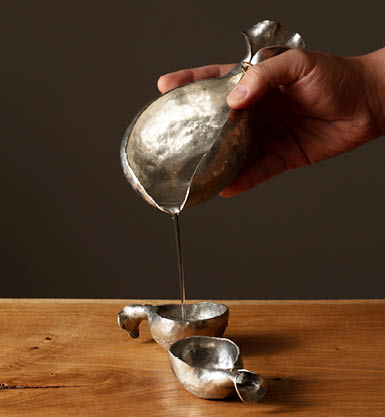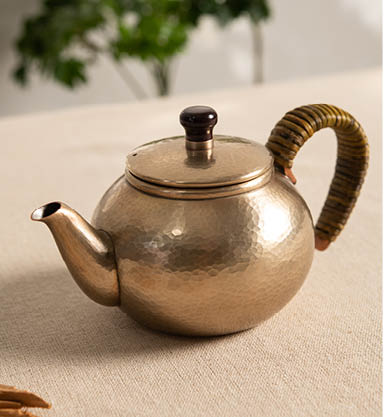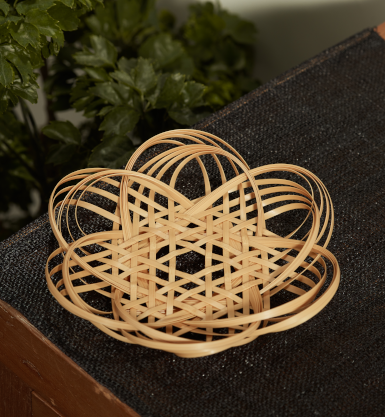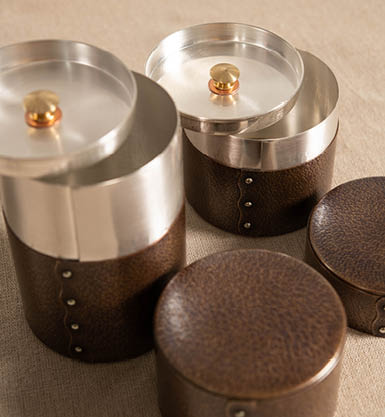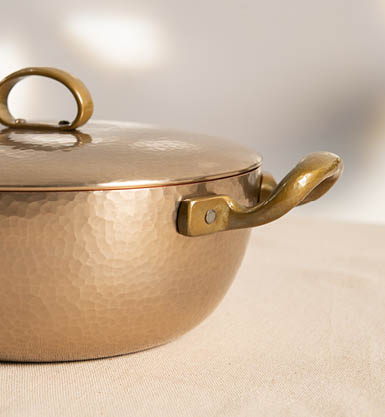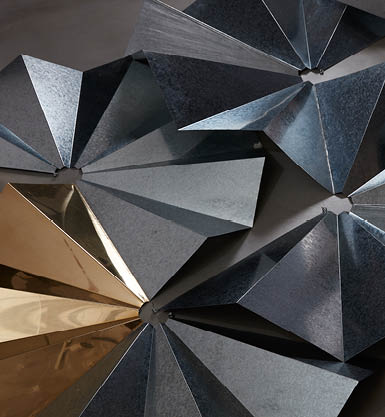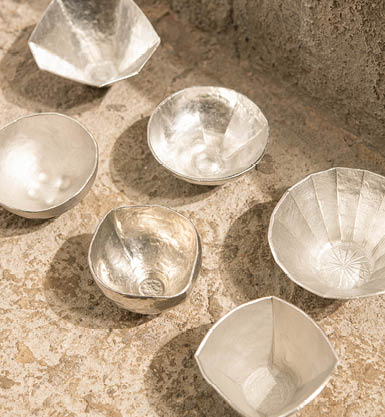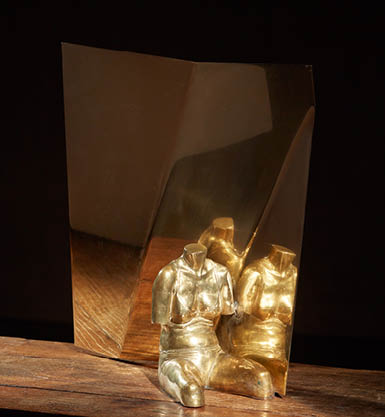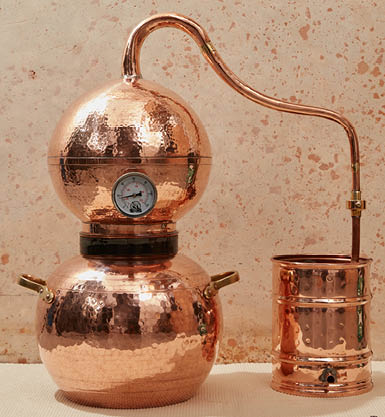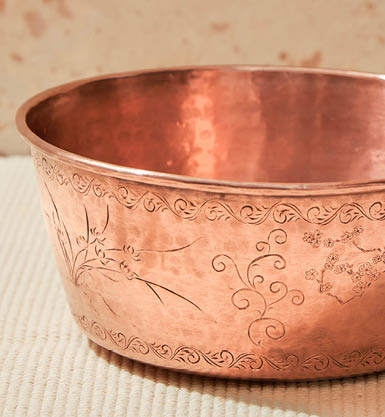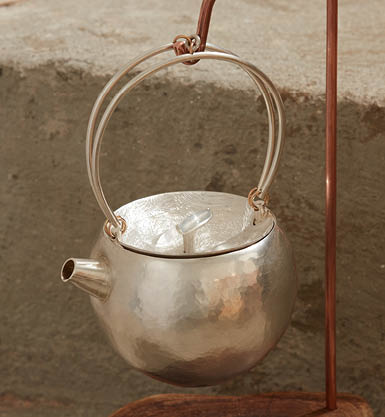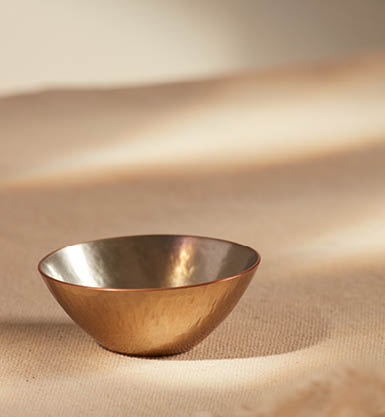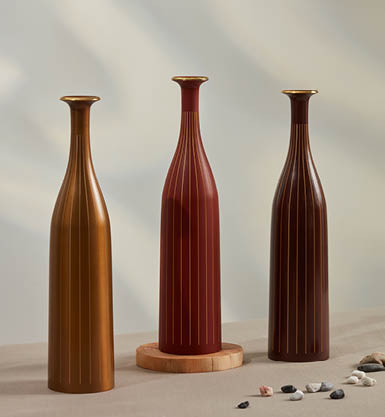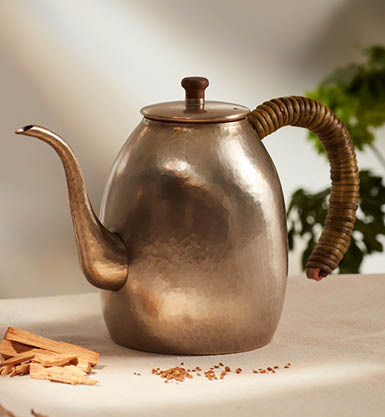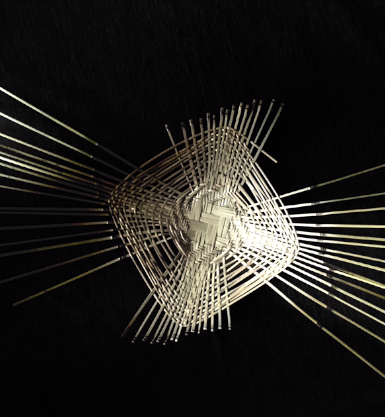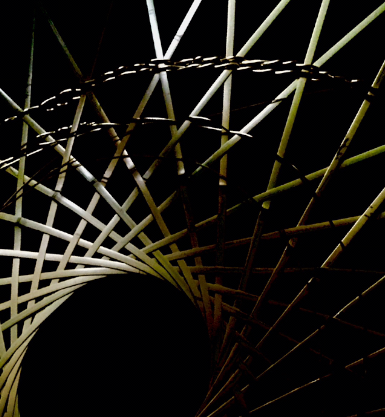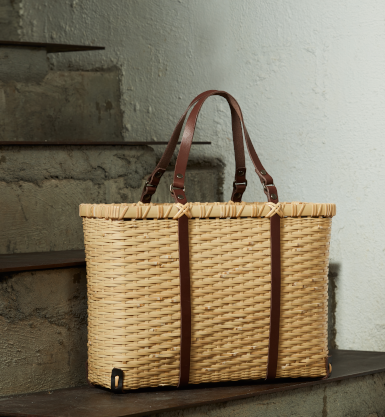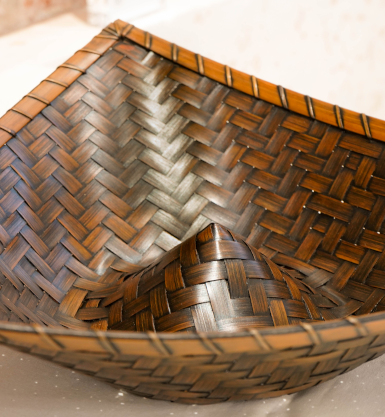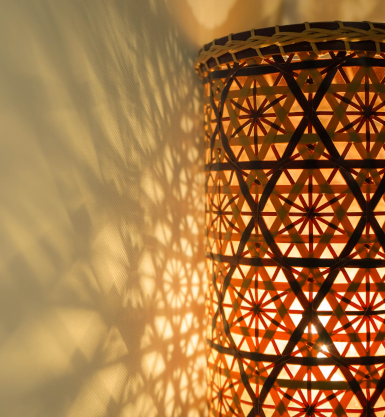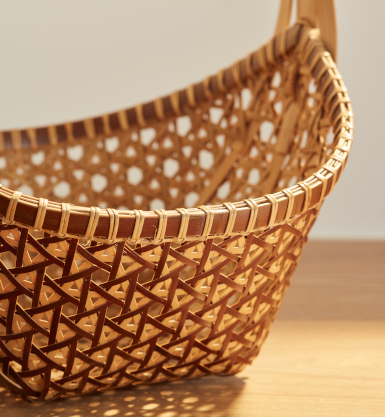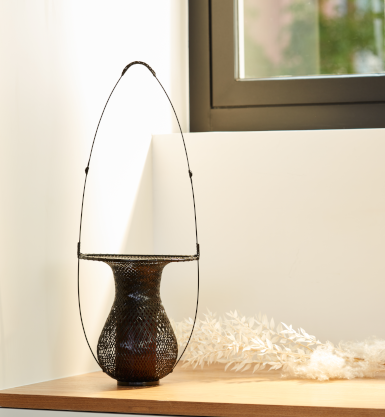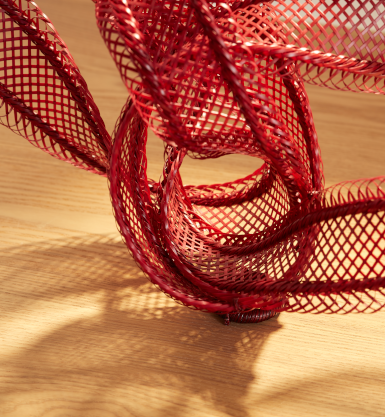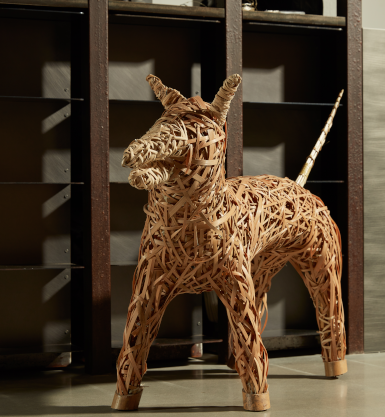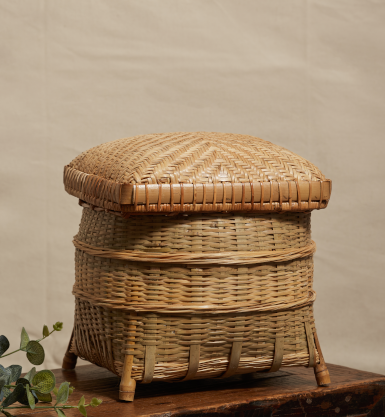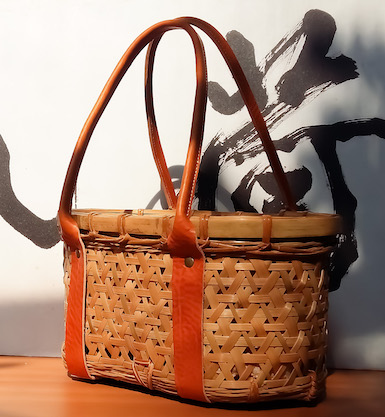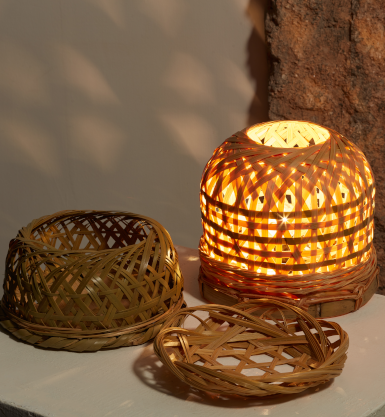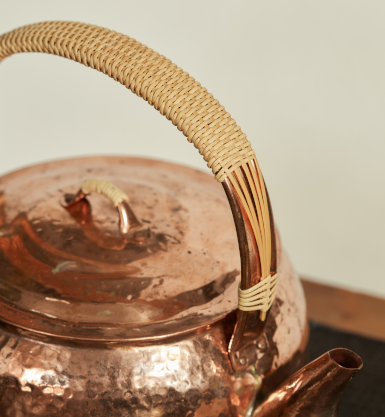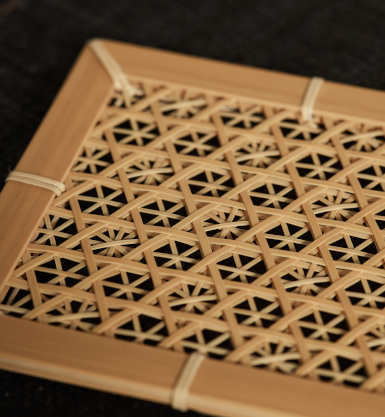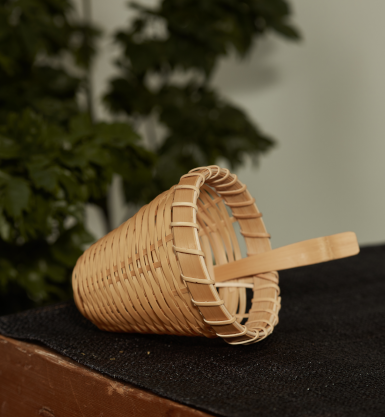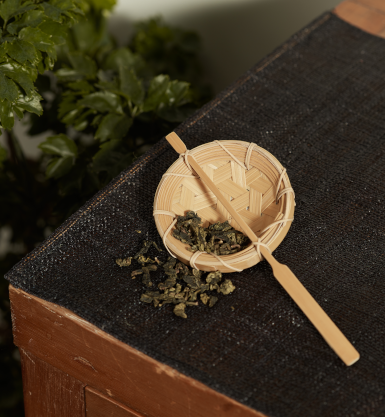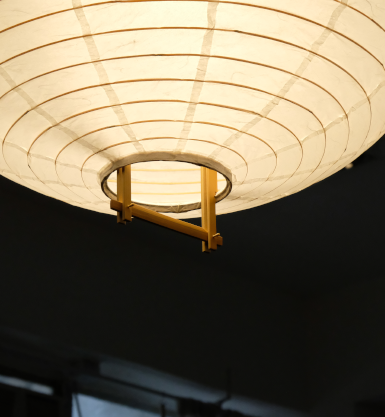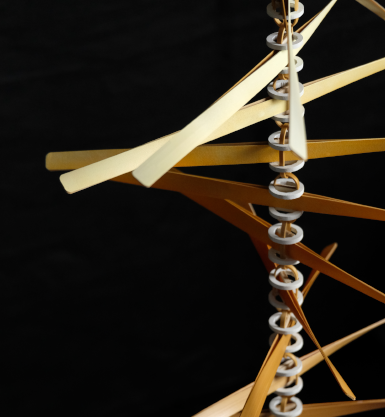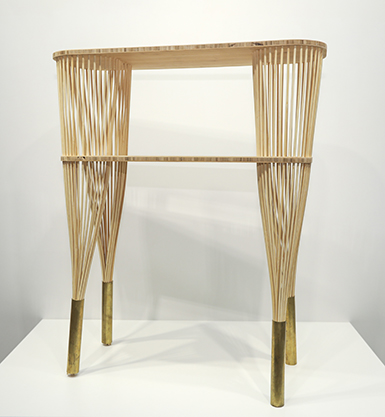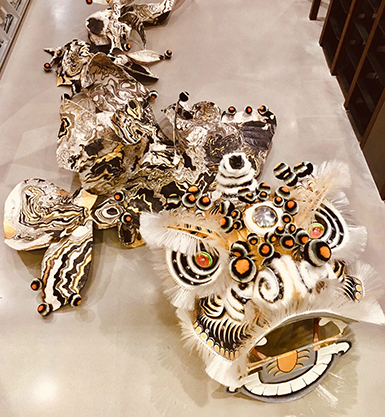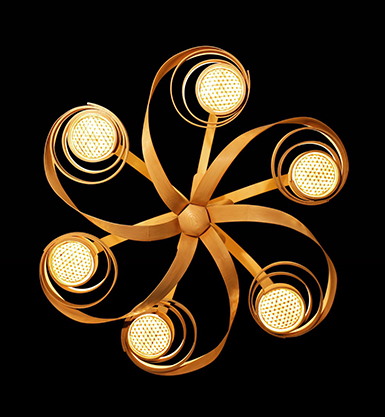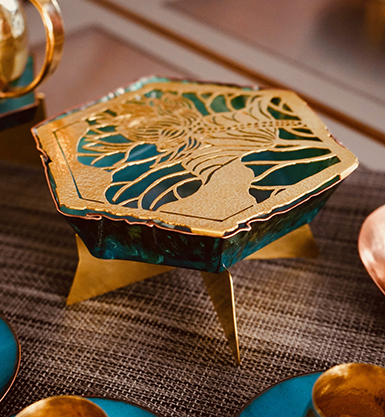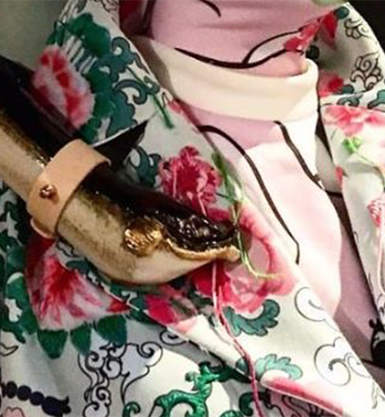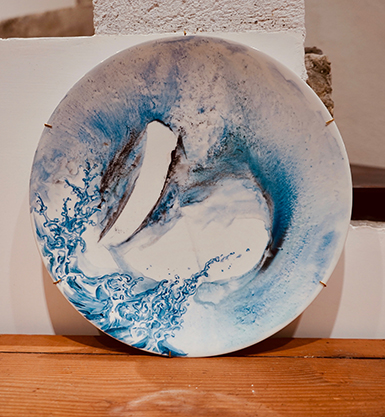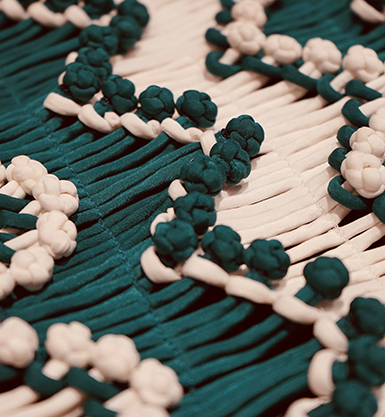The Guardian of Hope
The door knockers made by Master Liu and Fanson Lam, are inspired by the dogs that became the spiritual companion of Master Liu over the years. Through the collaboration, the master and his apprentice incorporated their respective expertise in casting and sculpting —
Fanson sculpted the dog heads in wax model while Liu cast them into several bronze door knockers.
In traditional Chinese architecture, a pair of door knockers are installed onto each side of the doors. By pounding the metallic knob, the sound serves the same purpose as a doorbell.
The door knocker comprises a metal ring and a base. The base can be either menba (cymbal-shaped) or pushou (animal-shaped). Circular, hexagonal and octagonal cymbal-shaped bases are mostly found in a commoner’s residence. They are usually engraved with religious patterns such as Bagua (the eight symbols in Taoist cosmology for the fundamental principles of reality) or totem. As for pushou, they were adorned with beast heads and are usually found in mansions or palaces. According to Feng Shui, these animal-shaped door bases are the guardians defending the house from evil spirits.
STORY OF THE TRADITIONAL CRAFT
In Hong Kong, the traditional casting industry mainly produces copper or iron parts for machine components. Being the apprentice of Master Liu Wing Sheung, sculptor Fanson Lam hopes to bring copper casting to a new aesthetic level through the collaboration. He discusses the feasibility of his creative idea with Master Liu. With over fifty years of experience, Master Liu's craftsmanship carries Fanson's creation.
Harnessing his creativity as a sculptor, Fanson incorporates Master Liu’s traditional metal casting techniques into new designs. Through endless discussions and experimentations, their complementary skills continue to bring traditional metal casting techniques into contemporary objects in our daily lives.
MAKING PROCESS
There are two major ways of casting: sand casting and lost wax casting. Liu specializes in the latter and the making process is as follows:
First, a sculpted clay model is covered with silicone gel, forming a mold after being air-dried. Liquid wax is poured into the mold and after cooling, the wax will harden to become the desired form. A complex form has to be divided into several parts and they are welded together to become a wax tree.
The wax tree is then placed in a steel container where the plaster is poured into. Hardened plaster is heated so that all the wax wrapped around the plaster is melted and a hollow plaster mold is formed.
Copper is melted at a high temperature of over 1000°C and injected into the plaster mold. The plaster mold is cooled by immersing in water, enabling the copper inside to solidify. The plaster is then removed and an oxidized patina could be created by dipping the work into a special chemical solution. After coloring and finishing, the work is heated repeatedly and coated with a wax layer to enhance durability.
Artworks from same series
OTHER WORKS FROM EXHIBITION
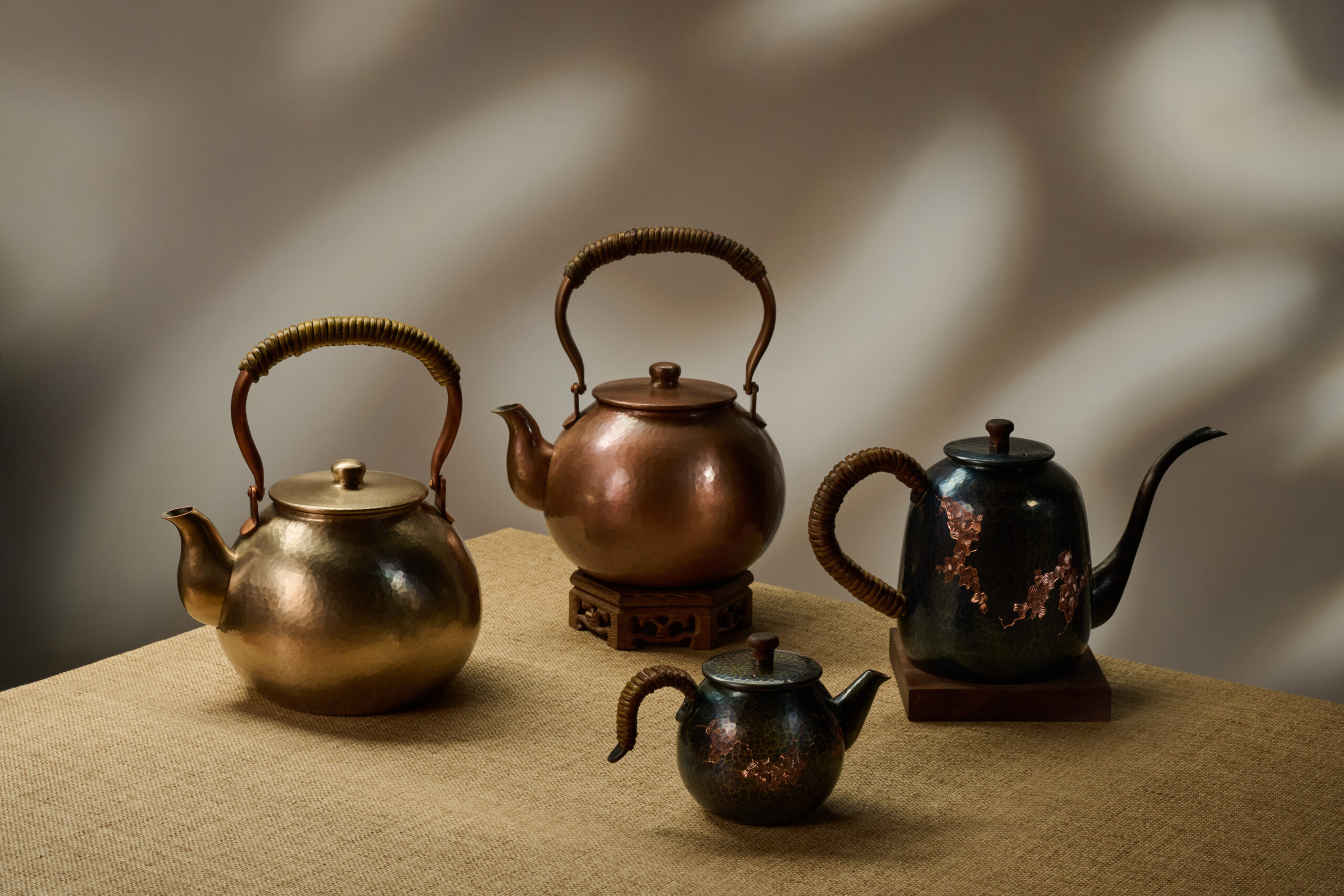
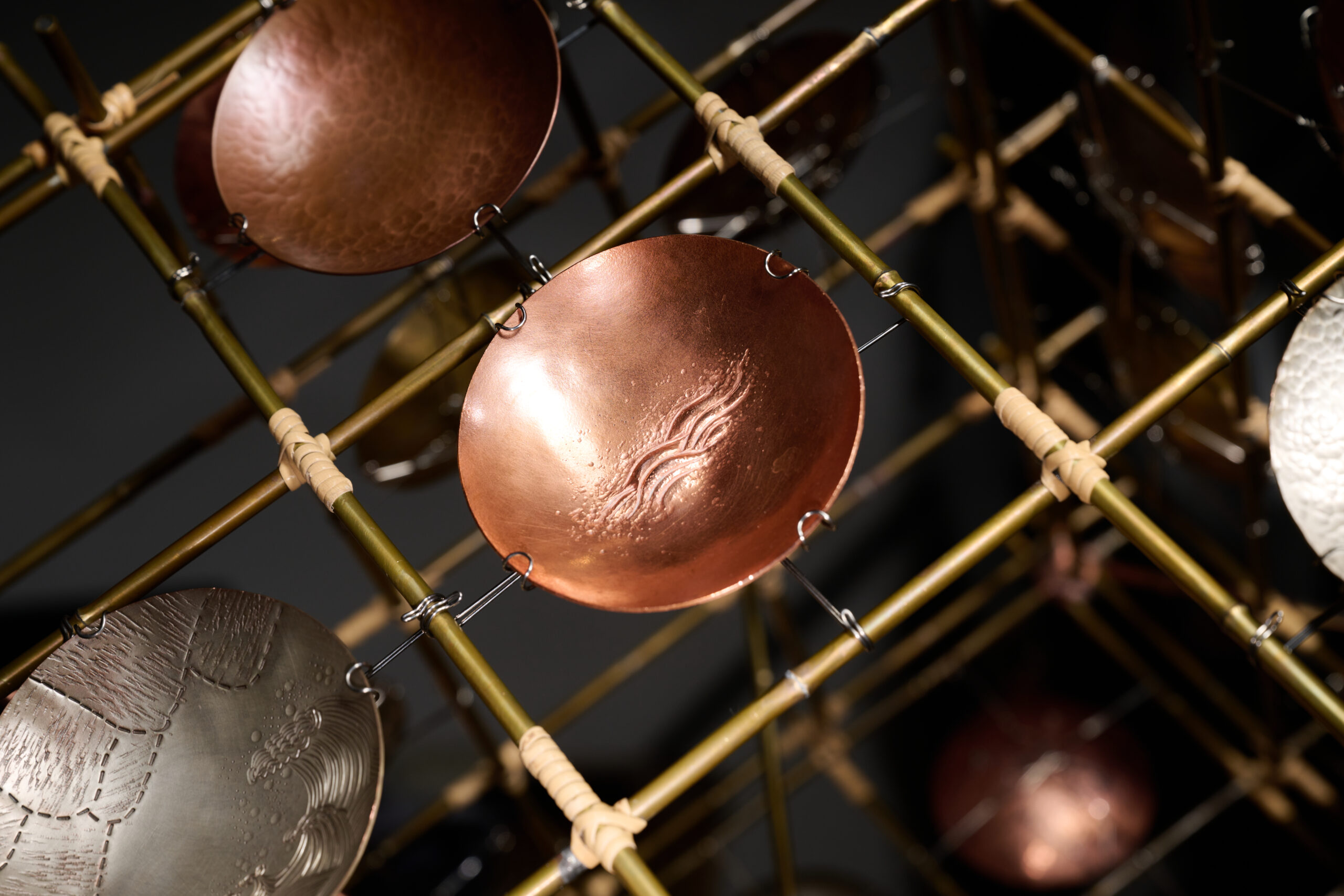
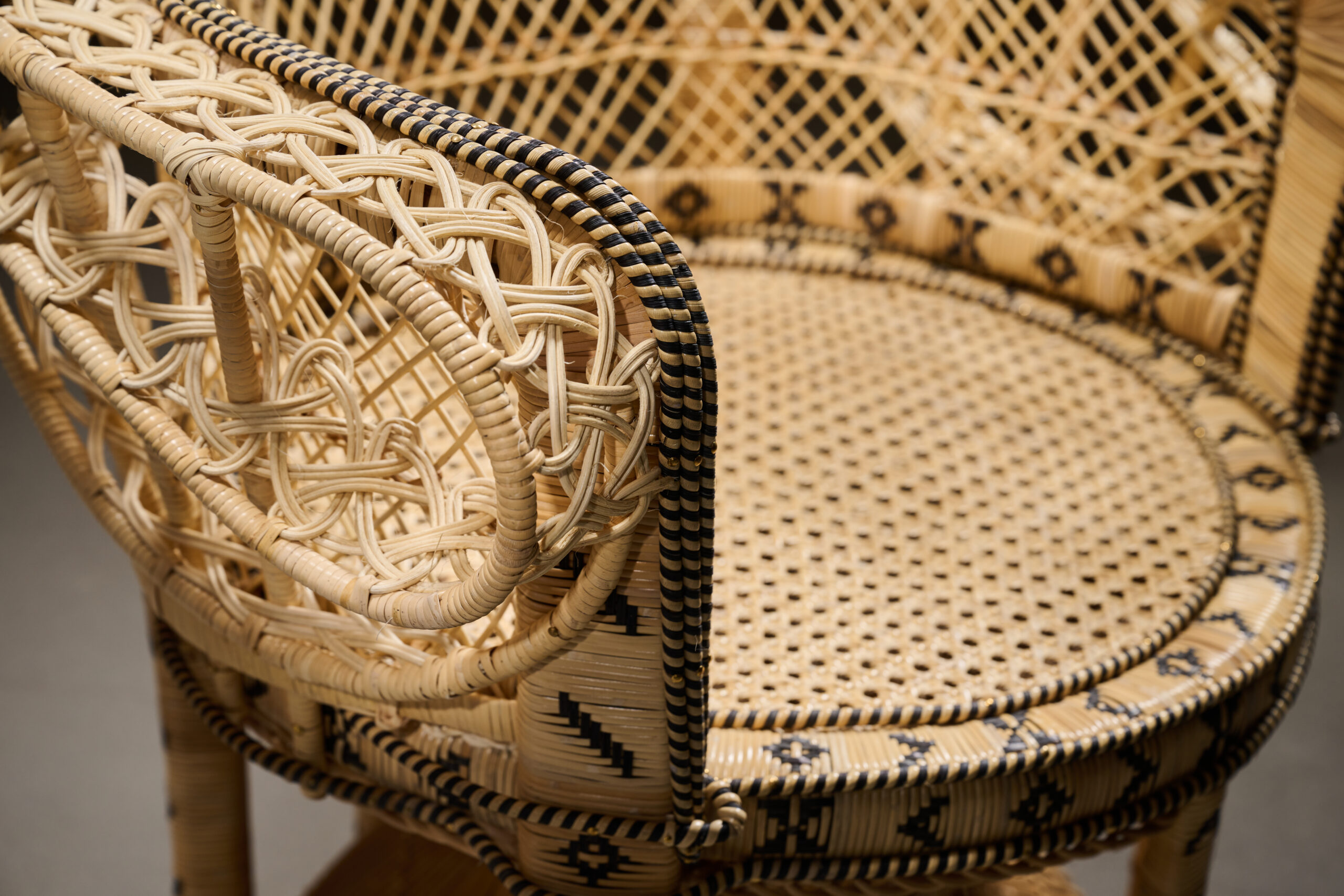
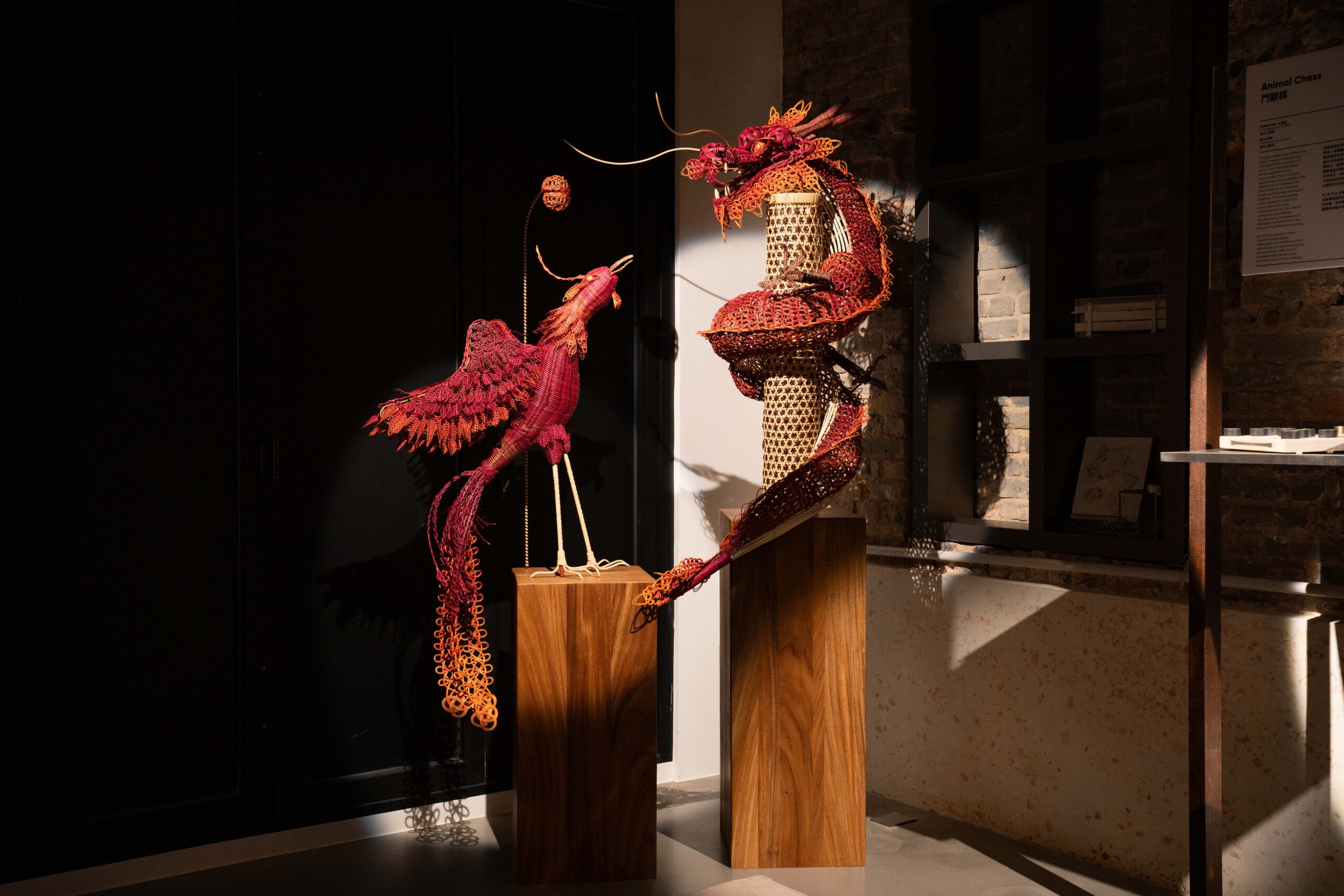
Auspicious Horizons
Yue Kee Rattan Factory & Ahung Masikadd & Barnard Chan & Cecilia Lai


